Ancient Greece is the cradle of Western theatre, while theatre as a phenomenon is considered an integral part of general culture. This was true in Ancient Greece and it remains so today all over the world. The little amateur cultural historian within me likes to joke that the Greeks invented theatre simply because they were terribly bored, not because they were “very refined and cultured.” Imagine what it was like for someone born into a family of slave owners – this person wouldn’t have had to do anything since slaves would do everything on their behalf; education (as far as we know) lasted shorter and not everyone was educated. There were no books, music players and TV sets, and don’t even get me started on digital devices of all kinds. Now, imagine living such a life every day, for the rest of your life. It would drive anyone crazy from boredom! They had to come up with something and that something included theatre, philosophy, festivals, politics and certainly – wars.
Now, however, I am talking about theatre, so I come to the theatre in general, the town of Argos and the remains of the ancient theatre that was once built there.
The ancient Greeks built their theatres very skilfully and harmoniously, combining functionality with extraordinary aesthetics. This applies to all theatres constructed during that time, which were always open-air. Initially, in the 6th century BCE, theatres were made of wood, but from the 5th century BCE onwards, stone began to be used in theatre construction, which reached its architectural peak in the 4th century BCE.
The layout was, in its simplest form, reduced to a circular space at the bottom, usually 24 m in diameter, called the “orchestra,” which literally means “place for dancing.” This space was used by the “chorus,” a group of performers who either commented on the action, provided insight into it or sang and danced. On one side of this space was the “skené” – hence the term “scene” – which initially served as a place for actors to change costumes, but later took the form of a rectangular space with columns where the action took place. On the other side of the orchestra, there were circular or semicircular seats arranged in rows that were raised on the slope of a natural elevation (artificial mounds were very rare), allowing for clear visibility of the stage while also ensuring excellent acoustics. The remarkable acoustics of Greek theatres, where a spectator in the front row could hear the actors just as well as someone in the last row, is something that continues to amaze researchers and visitors today. Of course, there were other elements, but this outlines the basic architectural approach.
Around 15 ancient Greek theatres are currently on the UNESCO’s Tentative List of world heritage sites. One of these is the theatre in Argos and the modern town of Argos was my next destination.
By the way, the ancient Greeks believed that Argos was the oldest city in Greece, founded by an Egyptian, while it is still considered one of the oldest cities in the world – continuously inhabited for around 7,000 years! It is thought that people began living in this area around 5,000 BCE.
This history isn’t immediately visible today. I drove through the town, which seemed charming, then arrived at the site, parked my car and set off on foot to explore.
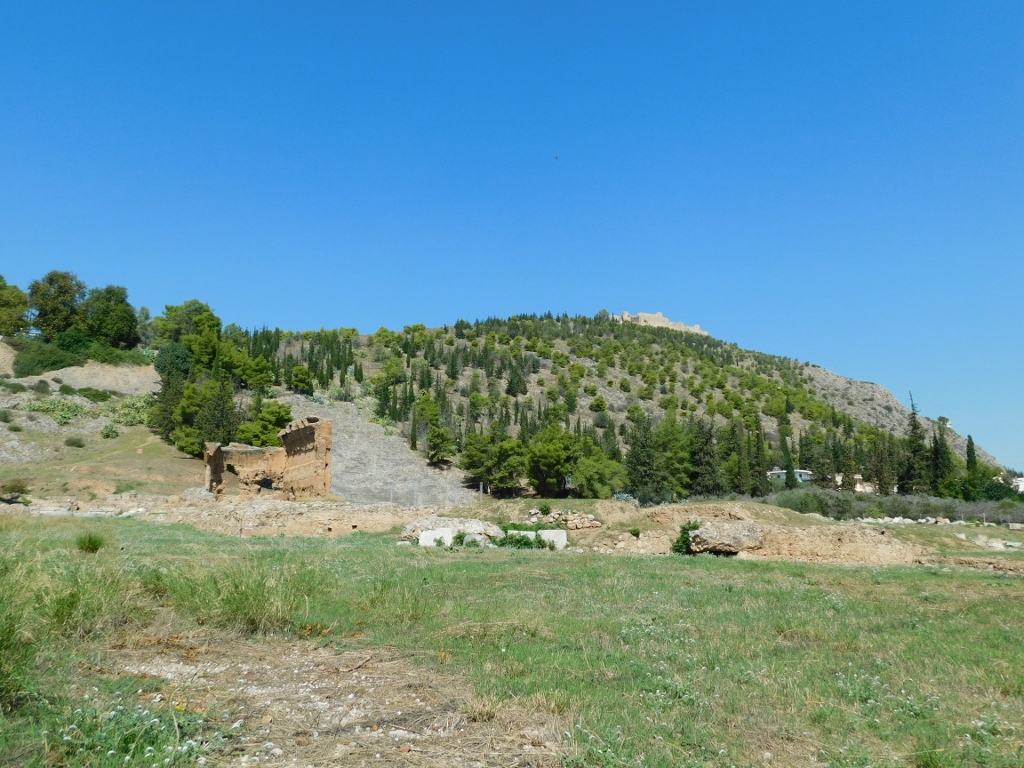 Theatre of Argos
Theatre of Argos
However, first I should mention that on the hill above modern Argos stands the Larissa Castle or rather citadel. According to the legend, the great hero Perseus, who founded Mycenae, was born in Argos, but this is not the site of the ancient Mycenaean city, which was built on a slightly lower hill north of Larissa hill. Over time, the ancient Greek city expanded onto this rocky elevation and onto the flat area south of the hill, where the remains of the agora are now located. Later, the Byzantines built a fortress on Larissa hill in the 12th century, while in the 14th and 15th centuries, the Venetians and Ottomans fought over the site, with the Venetians holding it for several decades before it finally fell to the Ottomans in 1463. In 1821, during the Greek War of Independence, the Larissa Castle was finally liberated. Still, I had no intention of going there.
I was interested in the Theatre of Argos, which was carved into the slope of Larissa Hill in the 3rd century BCE. Researchers estimate that it could accommodate around 20,000 spectators, with the theatre having 82 tiers of seats.
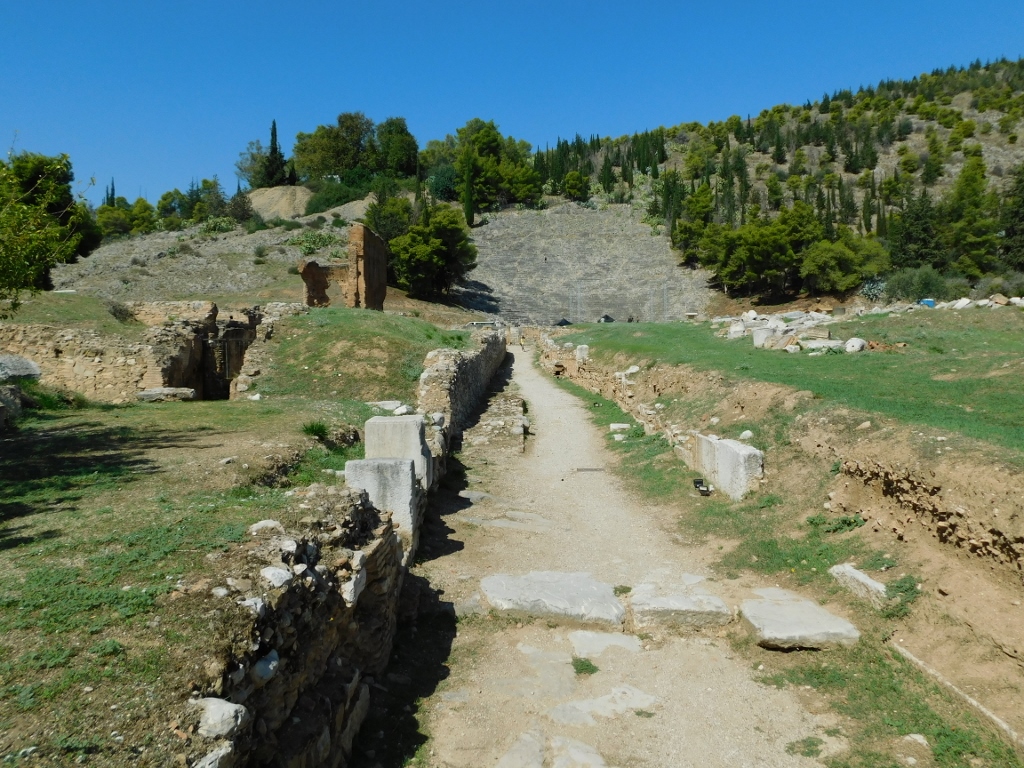 Theatre of Argos
Theatre of Argos
The ancient Romans also loved theatre and games (they, too, got bored), so the theatre in Argos was renovated and its repertoire was enhanced with gladiatorial battles and fights with wild animals. However, by the 5th and 6th centuries CE, the theatre ceased operations and began to decline.
In addition to gladiatorial contests, the Romans enjoyed bathing, so they built public baths, or thermae, in all major cities. This was also the case in Argos and the remains of the baths from the 2nd century CE can be seen to the left as soon as you enter the area of the theatre site.
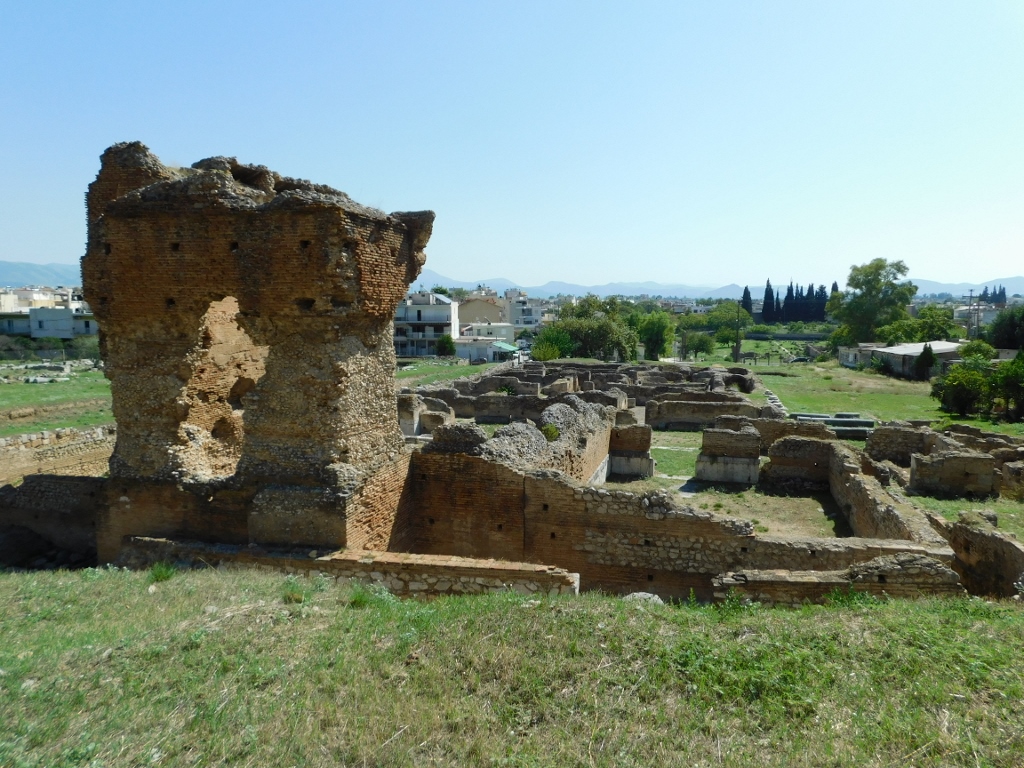 Roman baths of Argos
Roman baths of Argos
The most striking and largest part of the baths that has survived to this day is a wall about 11 m high, made of mudbrick.
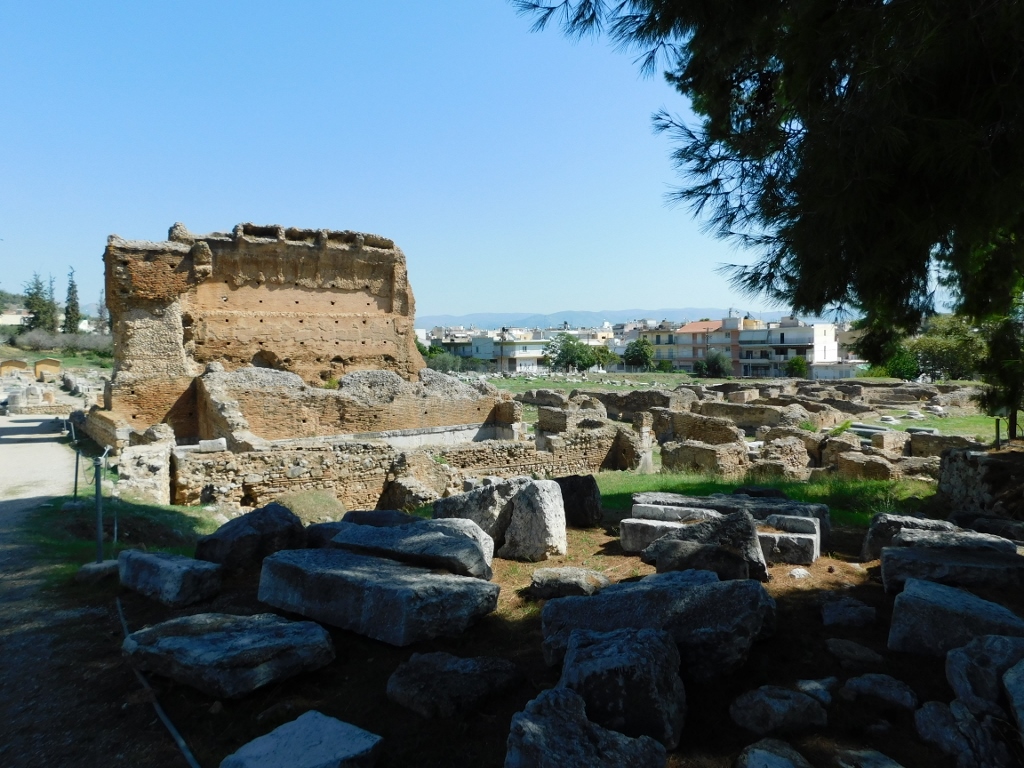 Roman baths of Argos
Roman baths of Argos
Still, I was interested in the remains of the theatre, just a few dozen meters away from the Roman wall, so I went to see that.
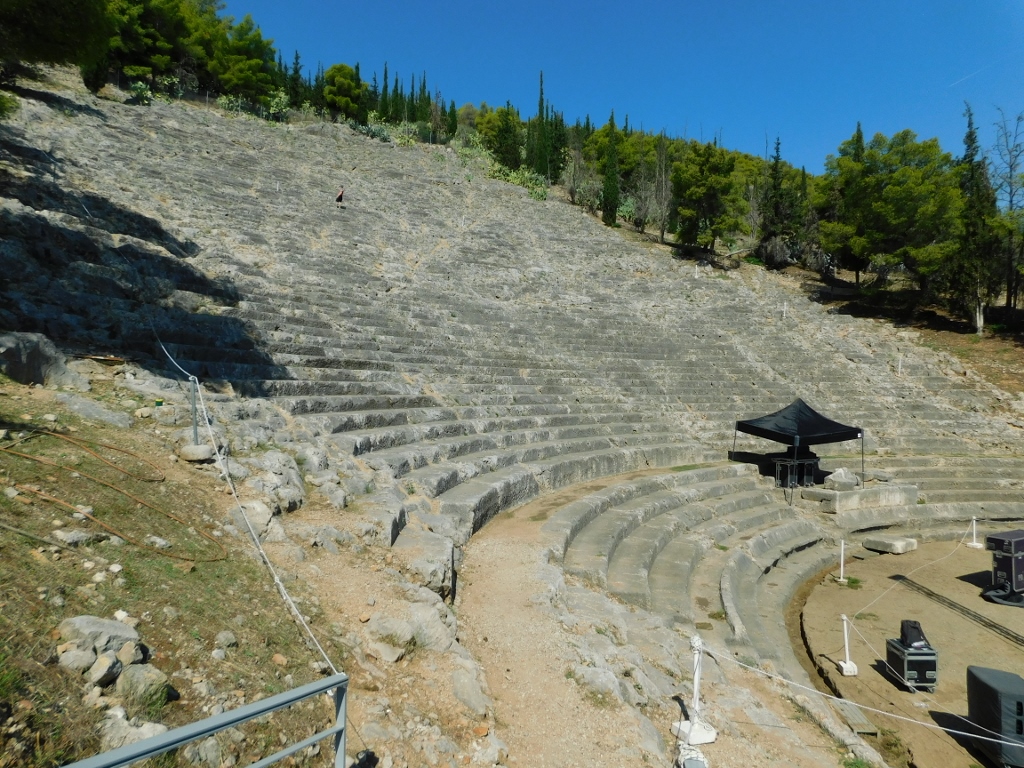 Theatre of Argos
Theatre of Argos
Only the central part of the theatre has survived, but that clearly doesn’t stop anyone from organising concerts or other events even today.
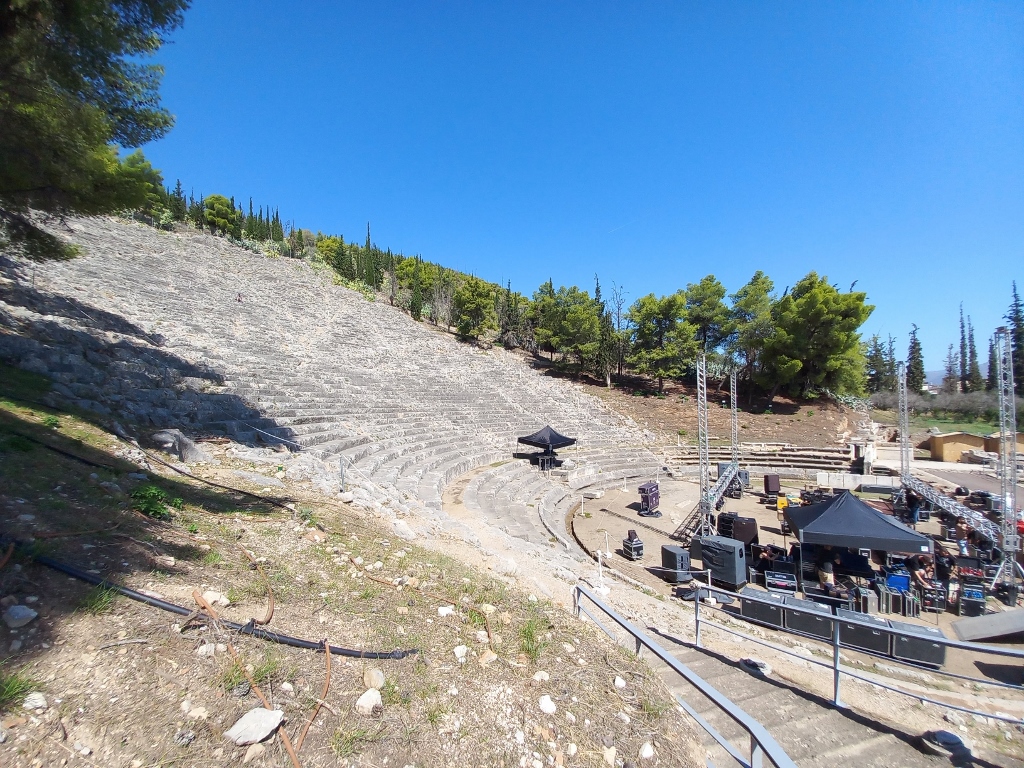 Theatre of Argos
Theatre of Argos
I then headed to the remains of the agora, with the idea of visiting it since I was already here. It is located on the other side of the present-day street in relation to the theatre site.
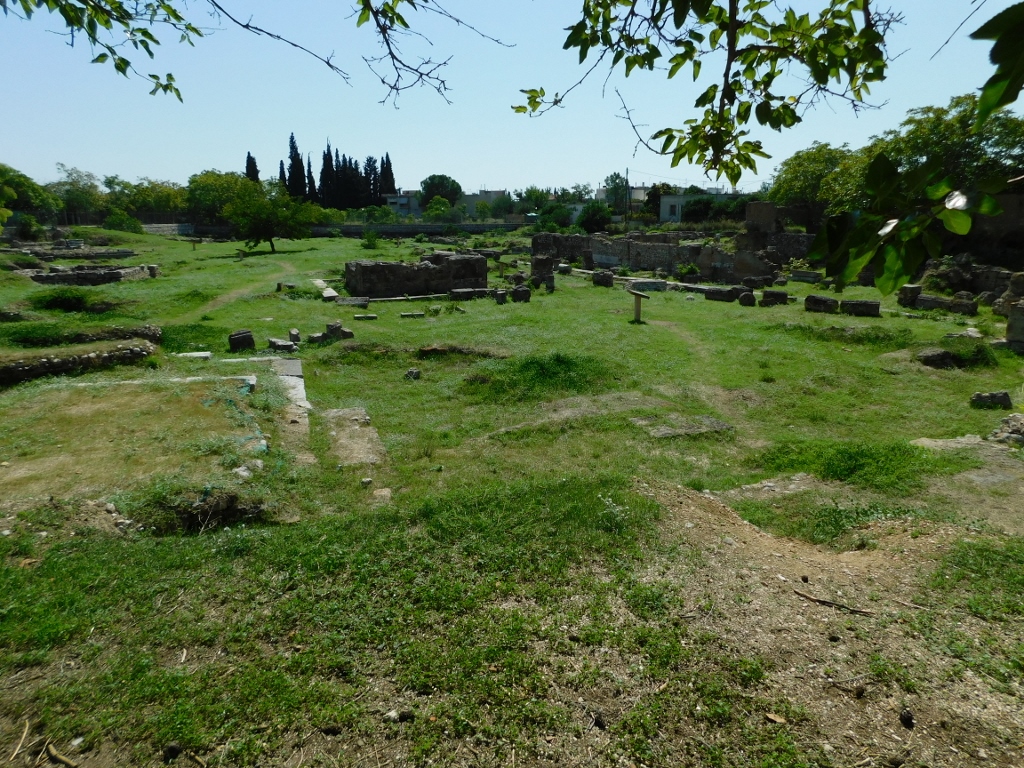 View at the remains of the agora of Argos
View at the remains of the agora of Argos
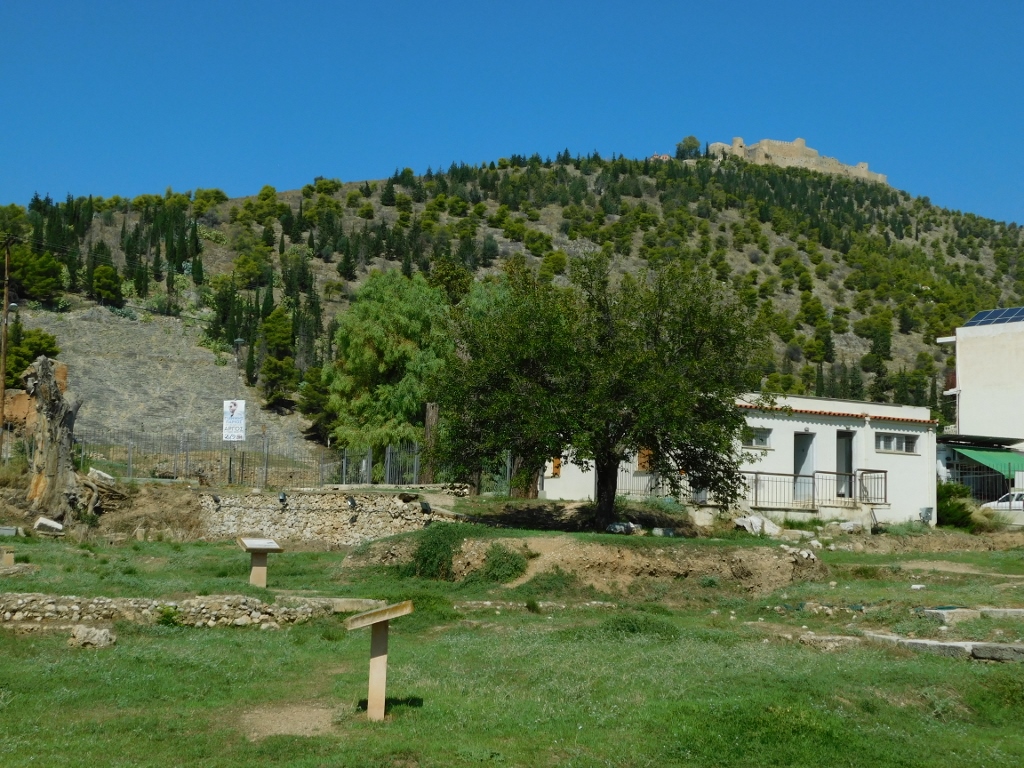 View from the agora area at the Theatre of Argos and the Larissa Castle
View from the agora area at the Theatre of Argos and the Larissa Castle
The oldest structures in the agora, such as the Column Hall, were built in the first half of the 5th century BCE, but construction continued into the Roman period. As for the Column Hall, only modest remains can be seen today, but the situation is somewhat better with the monumental fountain from the period of 150-200 CE.
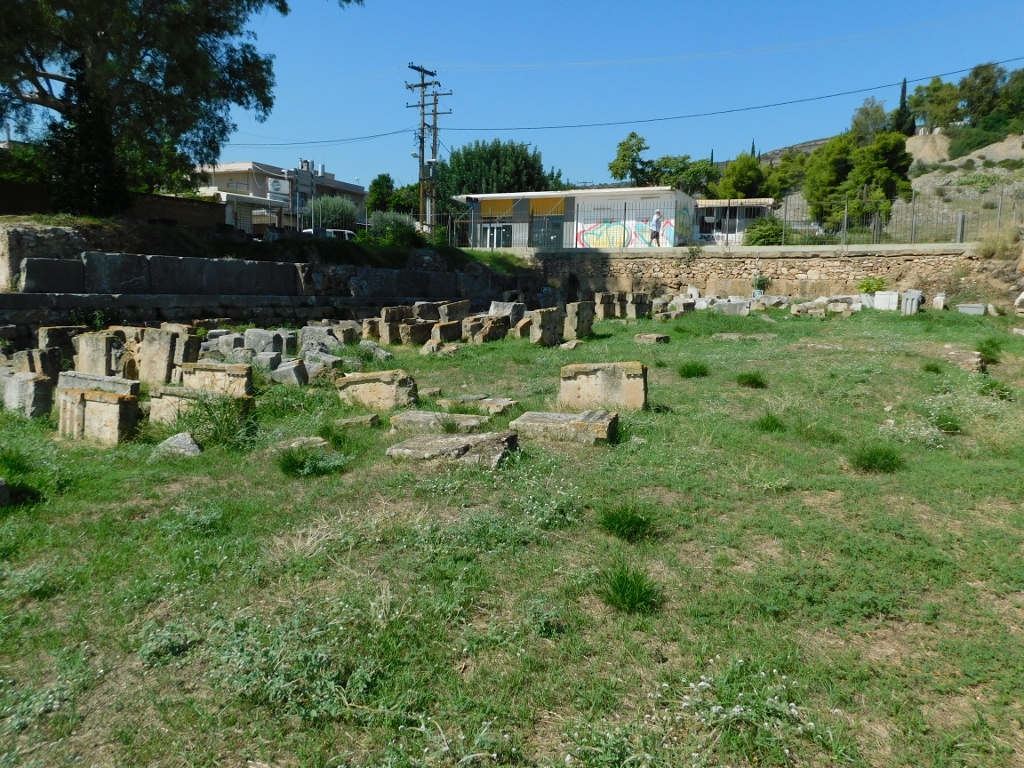 Remains of the agora of Argos, a detail
Remains of the agora of Argos, a detail
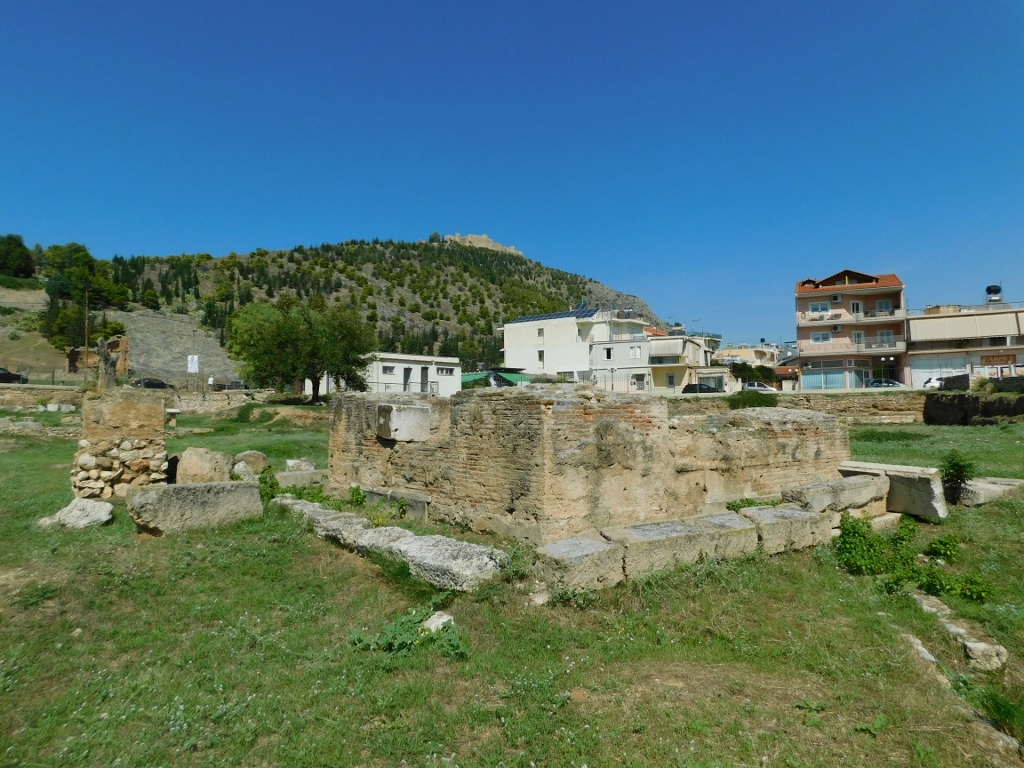 Remains of the agora of Argos, a detail
Remains of the agora of Argos, a detail
Argos is also interesting in a historical and linguistic context. It was here that King Pyrrhus of Epirus (319-272 BCE) met his end during the early incursions of the Romans. According to the legend, he was struck on the head by a tile thrown by an older woman from the top of a building while he was fighting her son. This knocked him off his horse and broke his spine. However, Pyrrhus, who was considered one of the greatest military leaders of his time, is remembered not for the peculiar manner of his death, but rather for his battles against the Romans in 280 and 279 BCE. Although his army won those battles, he suffered an extraordinarily high number of casualties, leading to the term “Pyrrhic victory” used to describe victories that come at an unacceptably high cost.
But back to the remains of the agora of Argos. Here, you can see the remnants of various other structures and there are signs clearly indicating what they are. I think going into too much detail would be excessive. It’s enough to see the photographs.
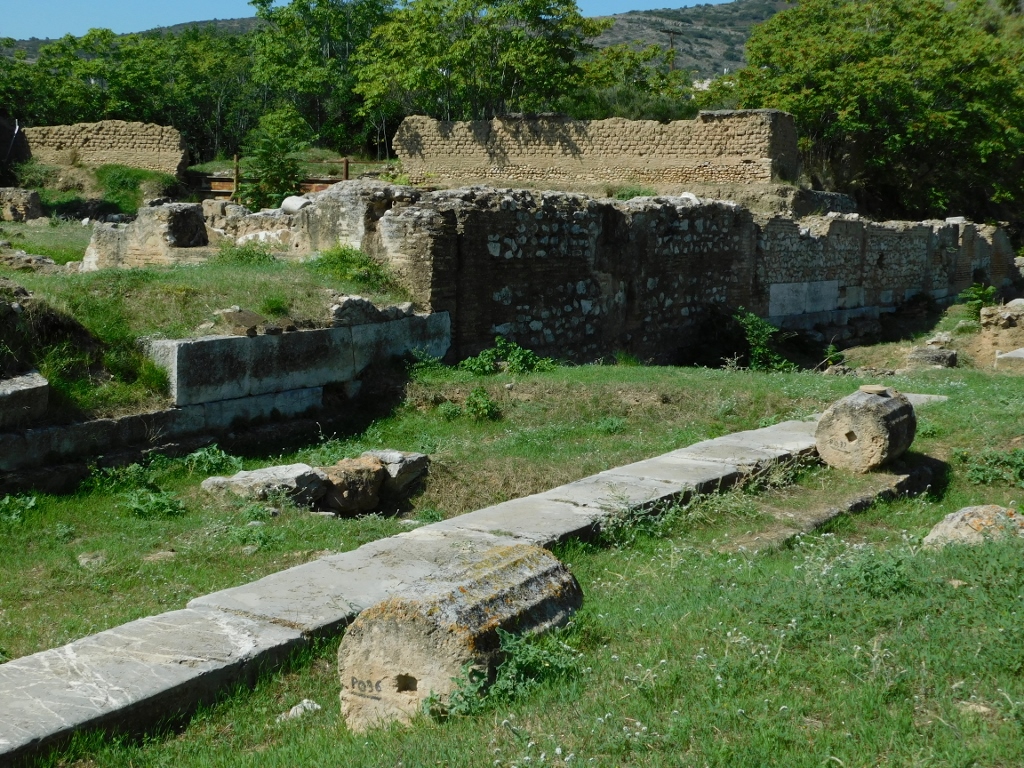 Remains of the agora of Argos, a detail
Remains of the agora of Argos, a detail
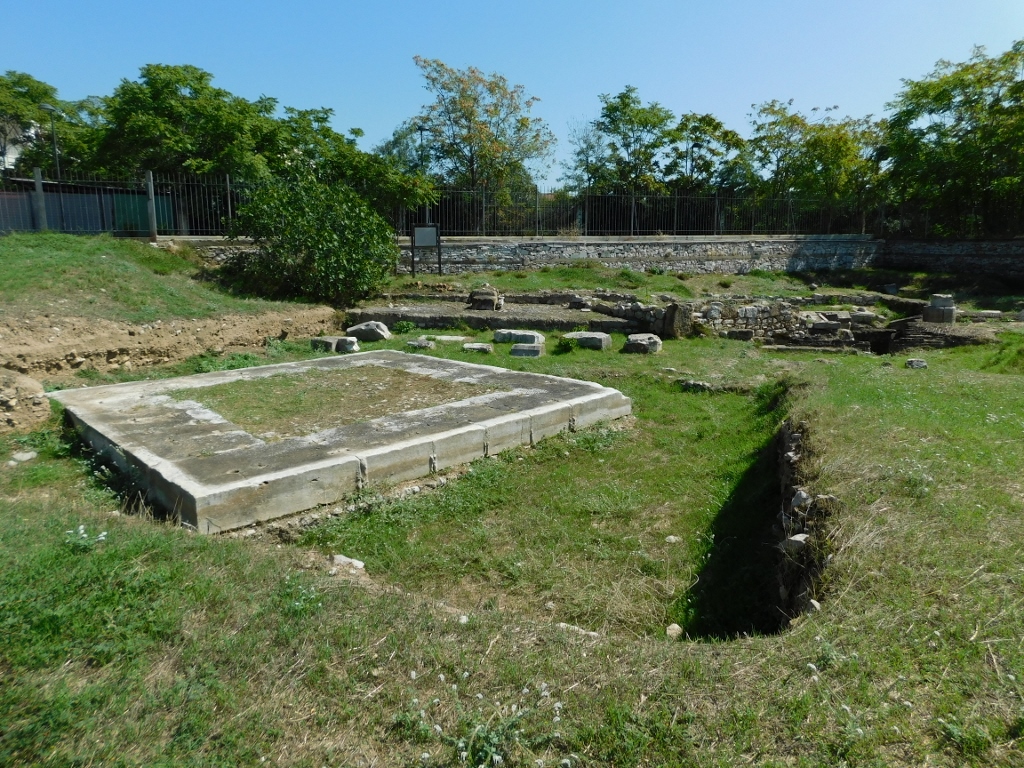 Remains of the agora of Argos, a detail
Remains of the agora of Argos, a detail
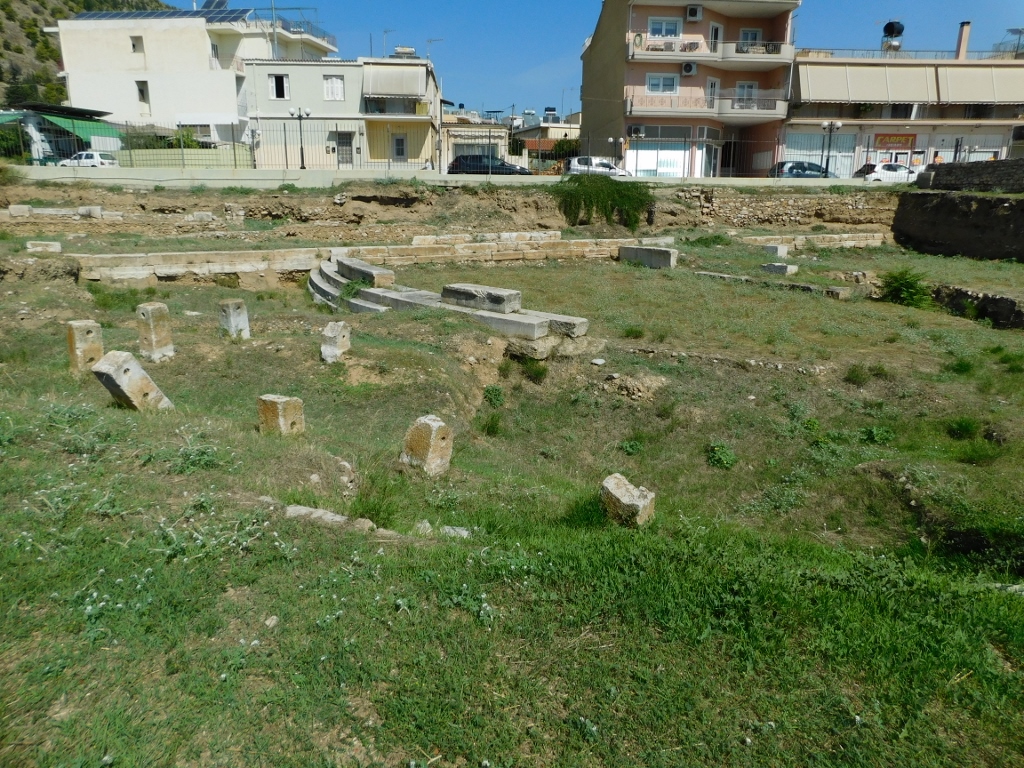 Remains of the agora of Argos, a detail
Remains of the agora of Argos, a detail
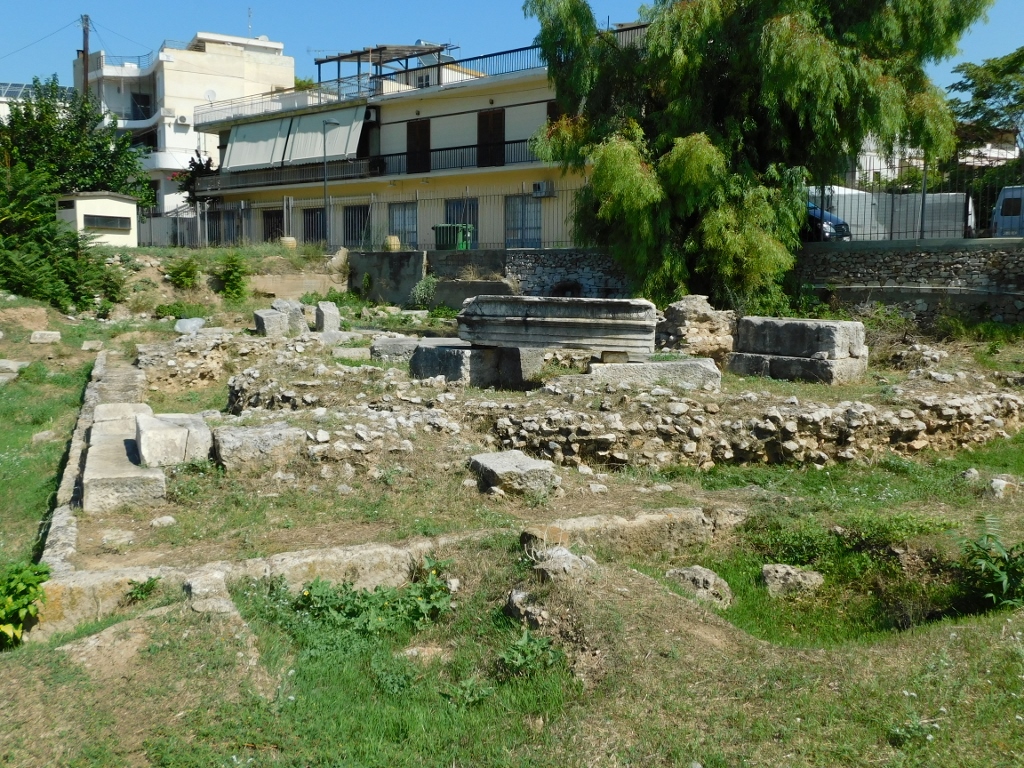 Remains of the agora of Argos, a detail
Remains of the agora of Argos, a detail
However, I must highlight one detail that I found particularly interesting: the ancient city sewer.
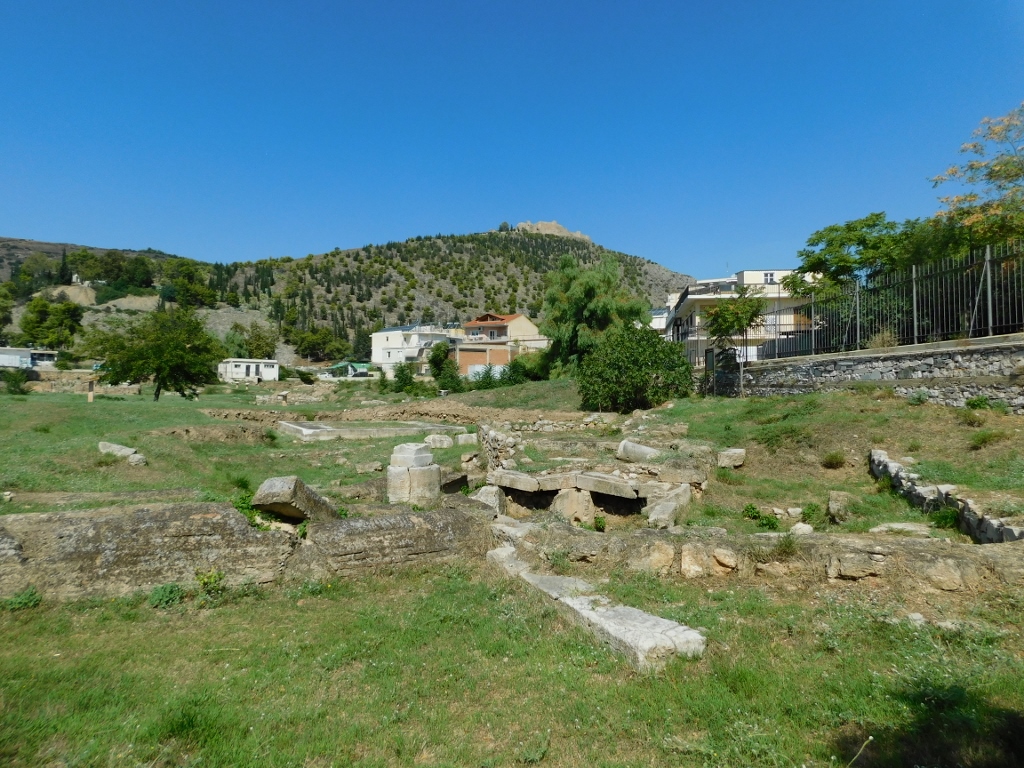 Remains of the agora of Argos, a detail
Remains of the agora of Argos, a detail
Since the agora was built in a natural basin at the foot of Larissa Hill, as seen in the previous photograph, rainwater typically collected and pooled there. In order to construct any buildings in such a location, it was necessary to divert that water. The first drainage pipe was installed in the 6th century BCE, but it was replaced by three parallel pipes in the 4th century BCE. Because these pipes were covered, it allowed for the expansion of public space above them.
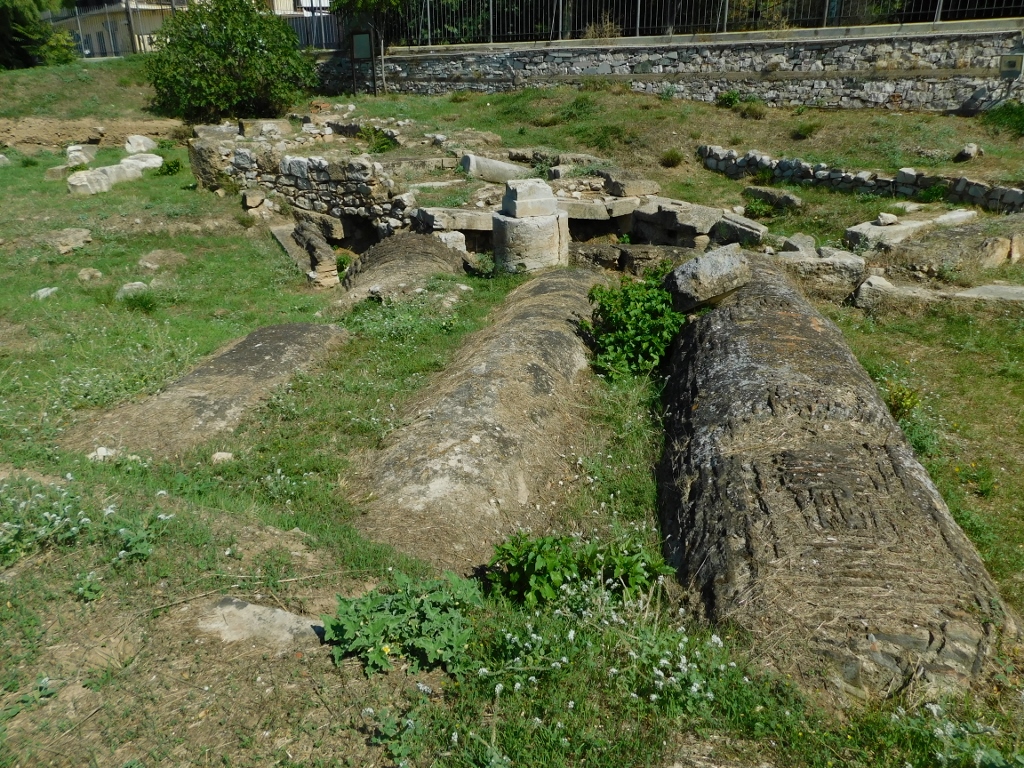 Remains of the agora of Argos, a detail
Remains of the agora of Argos, a detail
After visiting the agora of Argos, I got back to my car and drove to the remains of ancient Tiryns, which are located just off the road to Nafplio. Looking at the ruins from the road, one could think that the archaeological site of Tiryns is not particularly striking, but that’s only a superficial impression. Because of its importance, together with Mycenae, the Mycenaean Acropolis of Tiryns has also been inscribed in the UNESCO’s World Heritage List. Both cities were among the most important centres of the Mycenaean civilization and culture.
 Mycenaean Acropolis of Tiryns
Mycenaean Acropolis of Tiryns
The walls of Tiryns were built in the middle of the Argolid plain in the 13th century BCE, during the Bronze Age, and are considered a masterpiece of ancient military architecture. They are located about 20 km south of Mycenae on a small rise and are referred to as the “Mycenaean acropolis” simply because they originate from the same period of the Mycenaean civilization, although according to the legend, Tiryns was founded before Mycenae.
As in the case of Mycenae, the Cyclopes are said to have played a key role in the construction of the walls of Tiryns, using even larger stones than those at Mycenae. The walls that can be seen here, which are up to 8 m thick, 13 m high and with a total circumference of around 750 meters, are so impressive that they take your breath away. The ancient Greeks believed they were built by Cyclopes, simply because it seemed impossible for humans to construct such structures and only beings like the one-eyed giants could accomplish that. This was a perfectly reasonable conclusion for the ancient Greeks. Look at the next photo: I am 1.80 m tall, while some of the stone blocks used here, not necessarily in the picture, measure 3.5 x 1.5 m!
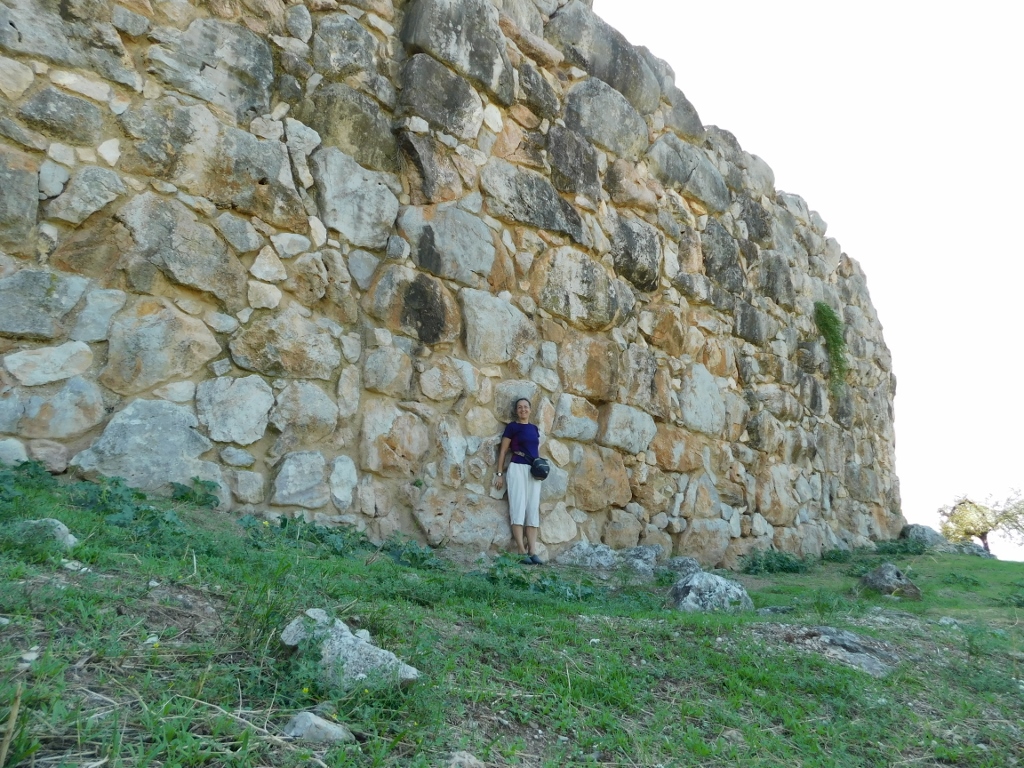 Mycenaean Acropolis of Tiryns
Mycenaean Acropolis of Tiryns
Tiryns is also linked to the legends about Heracles, the greatest Greek hero. He was a demigod (his father was Zeus), while his stepfather was Amphitryon, the king of Tiryns. Additionally, due to the tragic killing of his children, Heracles had to serve Eurystheus, another king of Tiryns, and complete the famous 12 labours while living in Tiryns. Both Amphitryon and Eurystheus were grandsons of Perseus, making them cousins. Some ancient Greeks even claimed that Heracles lived in Argos, 8.5 km northwest, but that’s not particularly important here.
What matters to me is that I enjoyed walking around and along the walls, and that stroll was quite pleasant.
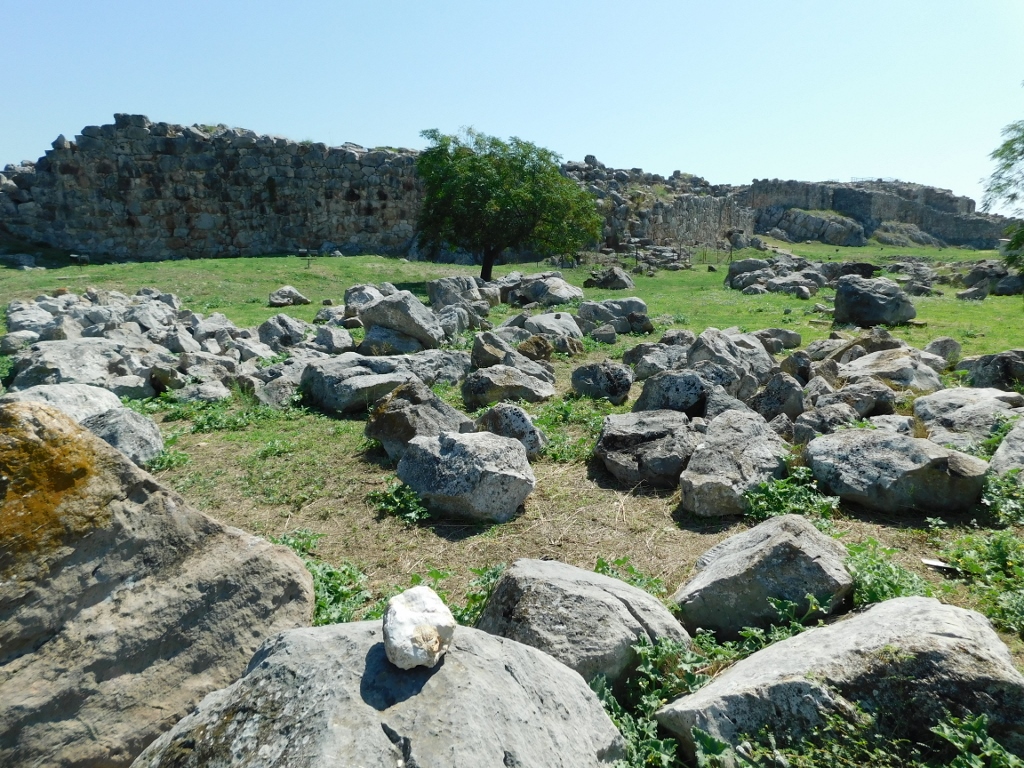 Mycenaean Acropolis of Tiryns
Mycenaean Acropolis of Tiryns
 Mycenaean Acropolis of Tiryns
Mycenaean Acropolis of Tiryns
I approached the fortress from the western side, where there are stairs leading to one of the postern gates. As I got closer to the steps, I noticed a woman descending, and she served as a great reference object to better appreciate the scale of the walls of Tiryns.
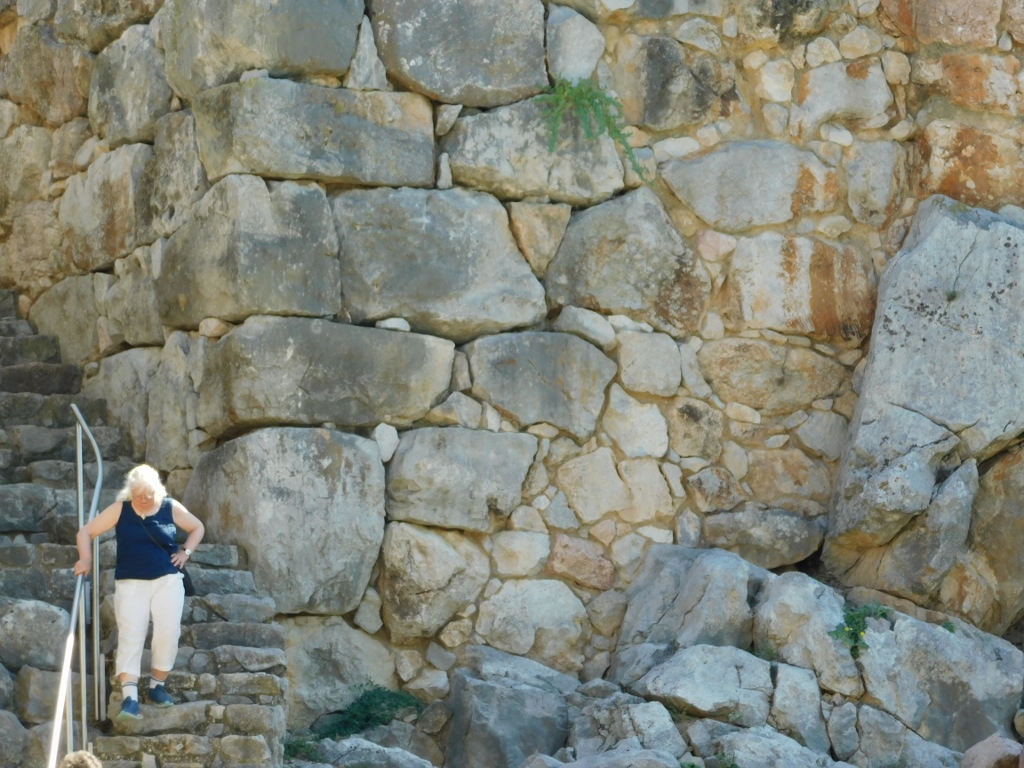 Mycenaean Acropolis of Tiryns, a detail
Mycenaean Acropolis of Tiryns, a detail
Climbing the stairs, I entered an elliptical, lower part of the fortress where the remains of structures used for military, religious, economic and service purposes can be seen.
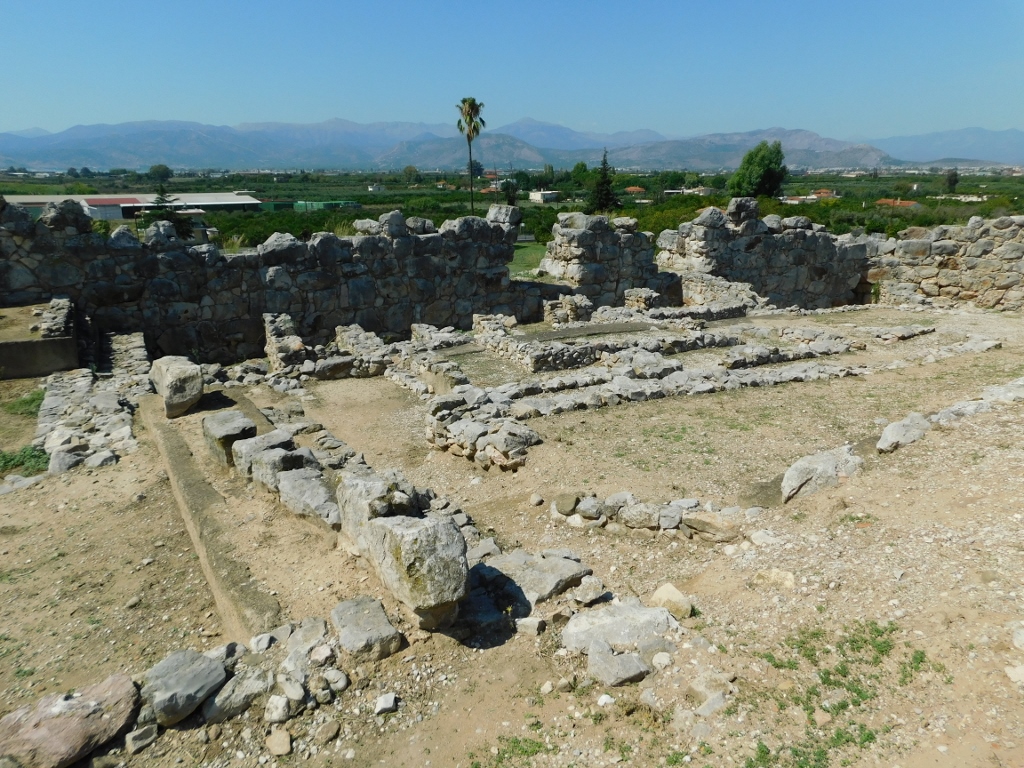 Mycenaean Acropolis of Tiryns, a detail
Mycenaean Acropolis of Tiryns, a detail
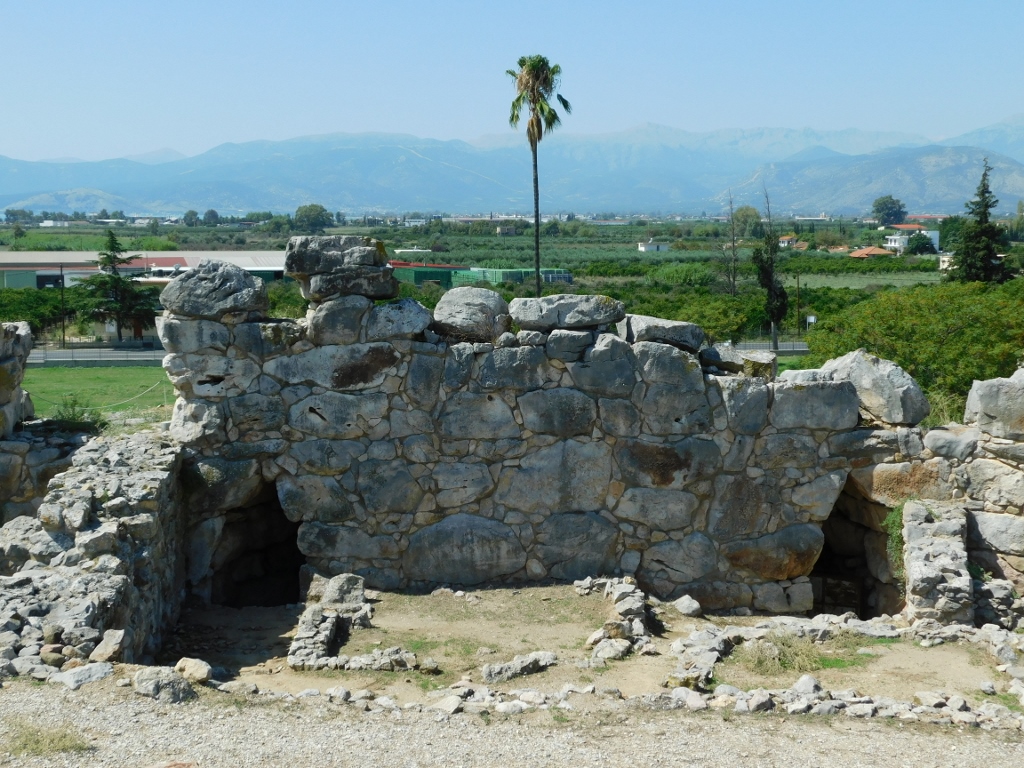 Mycenaean Acropolis of Tiryns, a detail
Mycenaean Acropolis of Tiryns, a detail
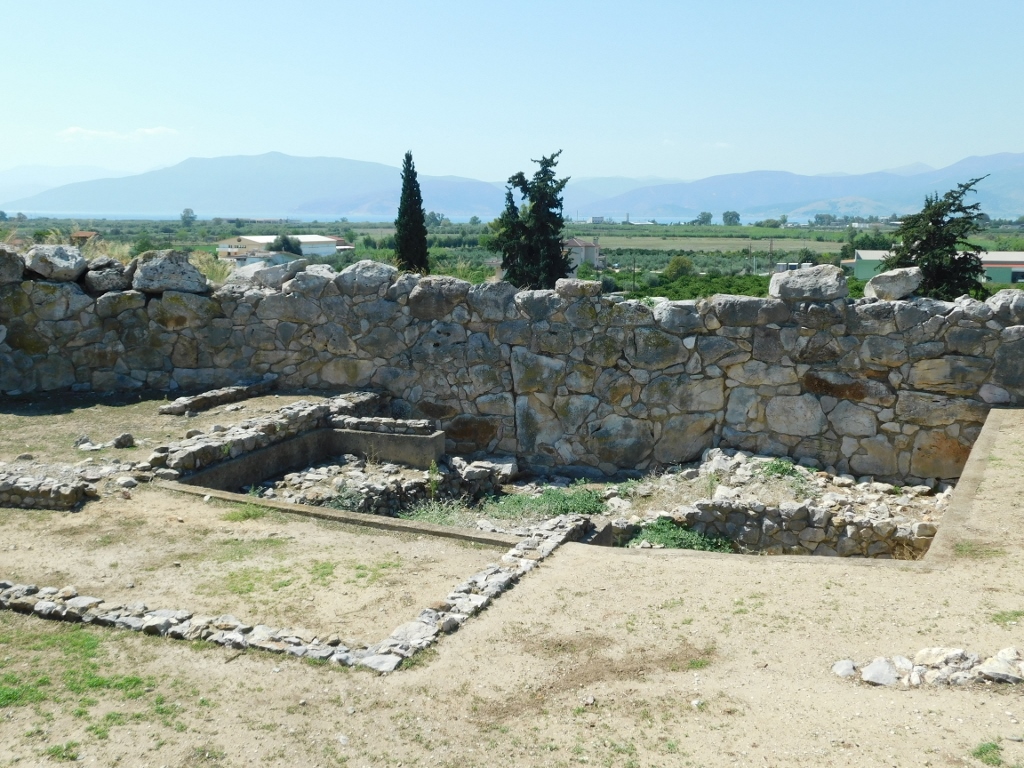 Mycenaean Acropolis of Tiryns, a detail
Mycenaean Acropolis of Tiryns, a detail
And then I reached the area of the main gate, where a narrow passage led upward towards the Palace. In the next picture, you can clearly see the thickness of the walls in Tiryns.
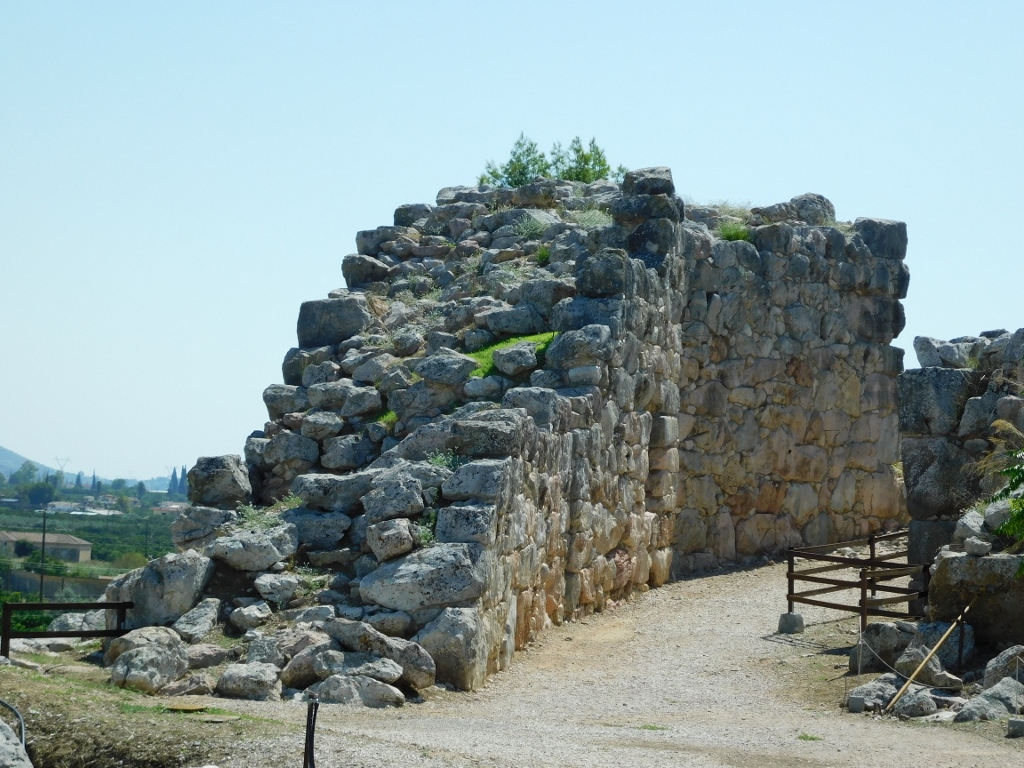 Mycenaean Acropolis of Tiryns, a detail
Mycenaean Acropolis of Tiryns, a detail
This section of the wall was also where a tower once stood and there is a niche that has been relatively recently restored.
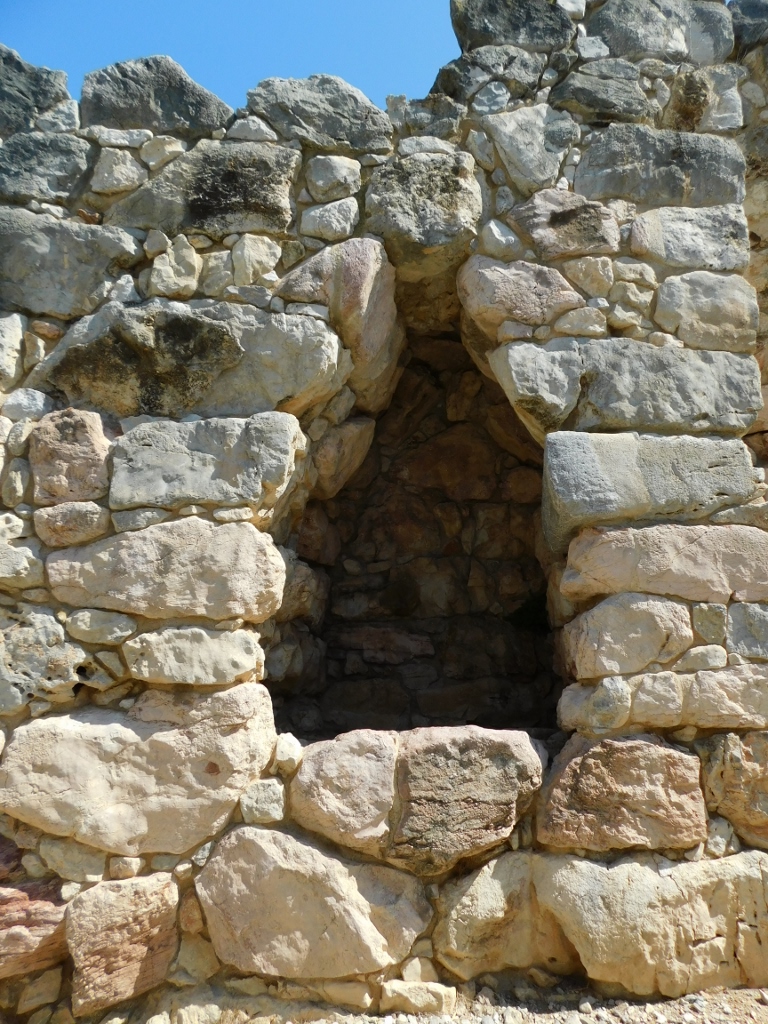 Mycenaean Acropolis of Tiryns, a detail
Mycenaean Acropolis of Tiryns, a detail
However, this passage leading from the main gate, which was likely the most probable point of enemy entry, also served as a trap for attackers. In such a narrow passage, they would be easy targets for defenders on both sides of the passage.
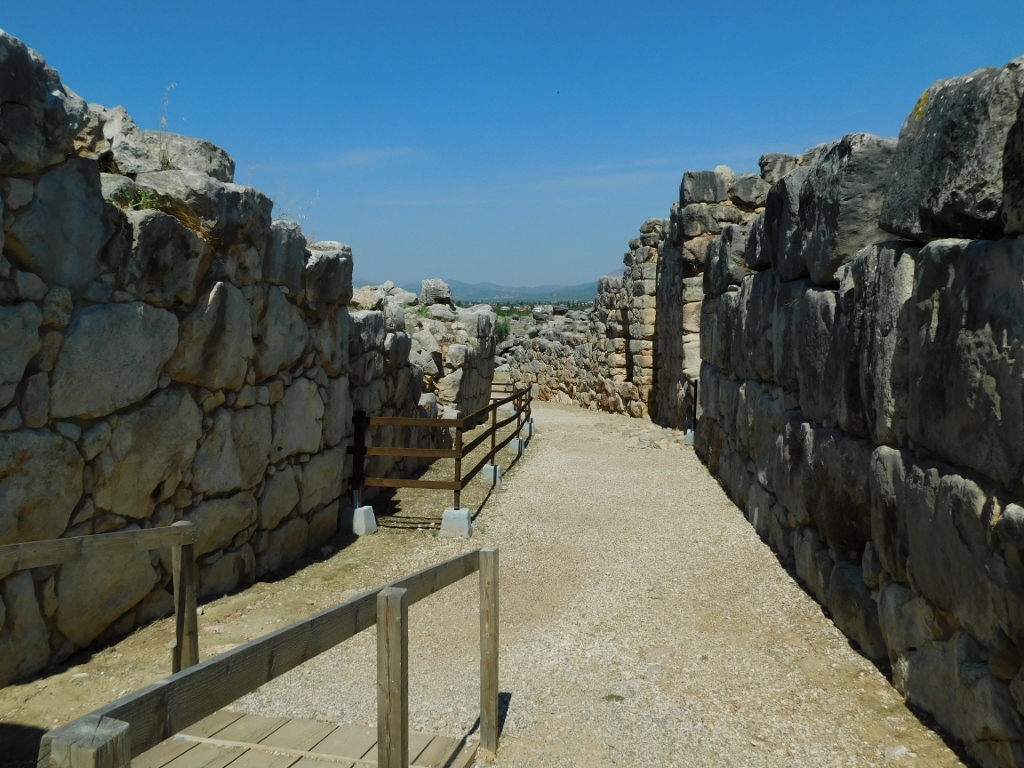 Mycenaean Acropolis of Tiryns, a detail
Mycenaean Acropolis of Tiryns, a detail
When I reached the area of the Palace, I first enjoyed the stunning view of the Argolid plain and the Argolic Gulf.
 View from the Mycenaean Acropolis of Tiryns
View from the Mycenaean Acropolis of Tiryns
At the top of the acropolis, only the foundations of the structures that were once built there can be seen today, along with a few interesting details. However, something unrelated to the ancient Greeks caught my attention at this point.
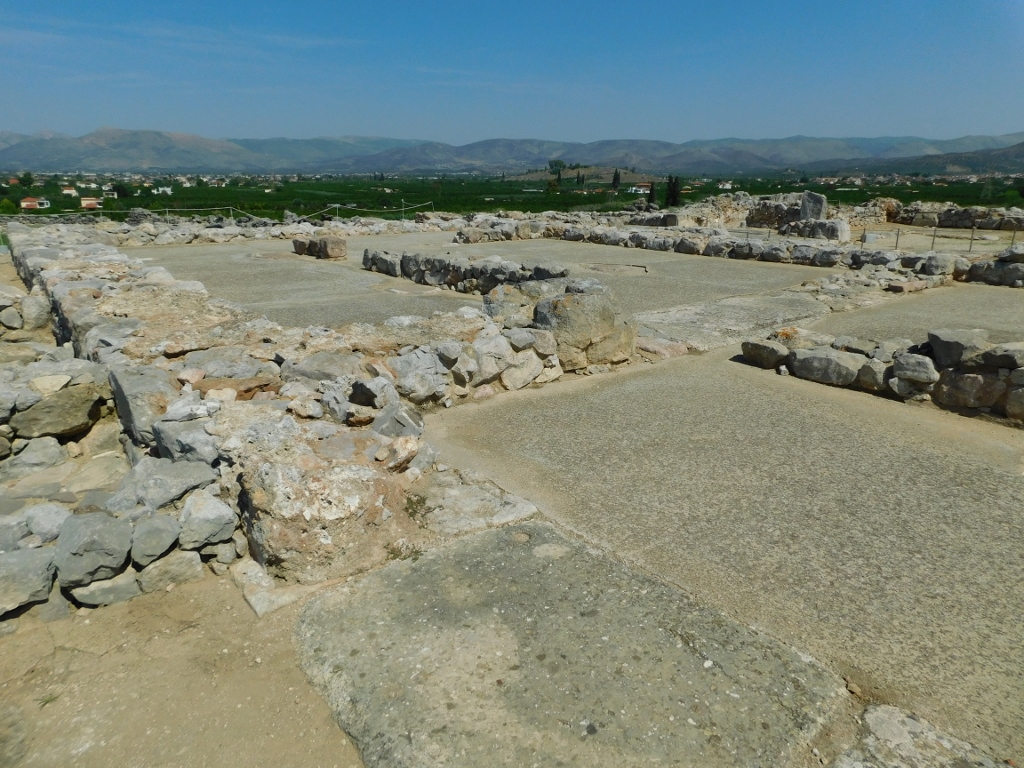 Mycenaean Acropolis of Tiryns, a detail
Mycenaean Acropolis of Tiryns, a detail
It was a beautiful butterfly – common yellow swallowtail (Papilio machaon).
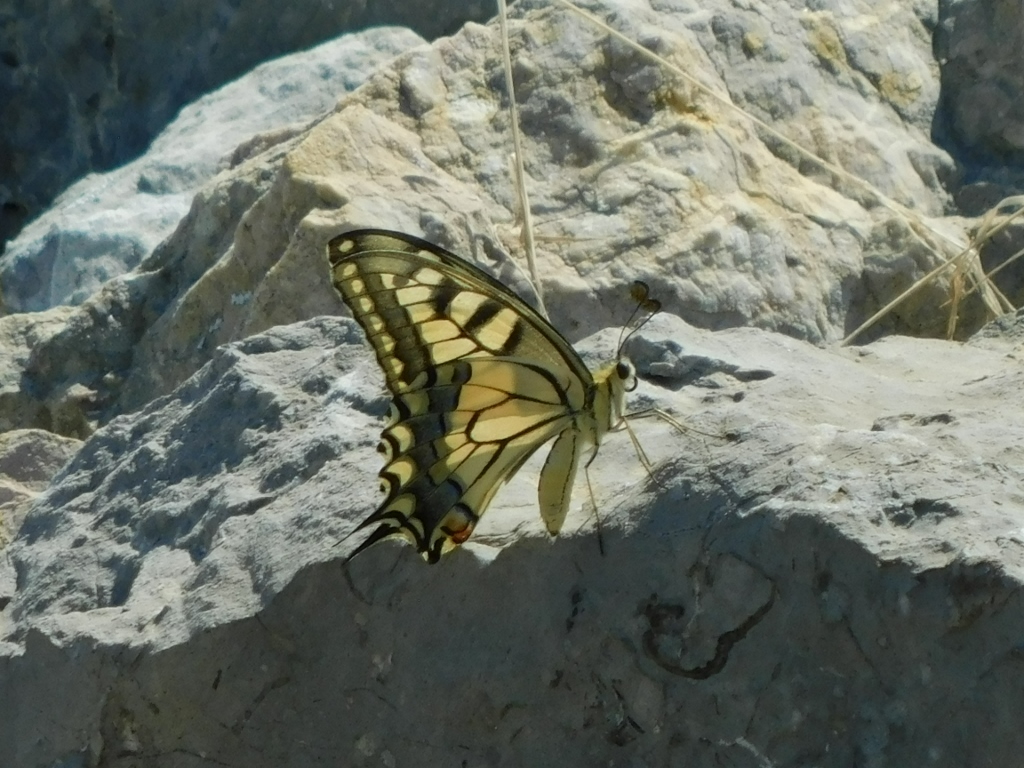 Common yellow swallowtail
Common yellow swallowtail
As for the remains of ancient Tiryns, I could only stroll around a bit and, above all, enjoy the beautiful day and the view of the ruins and the surrounding area.
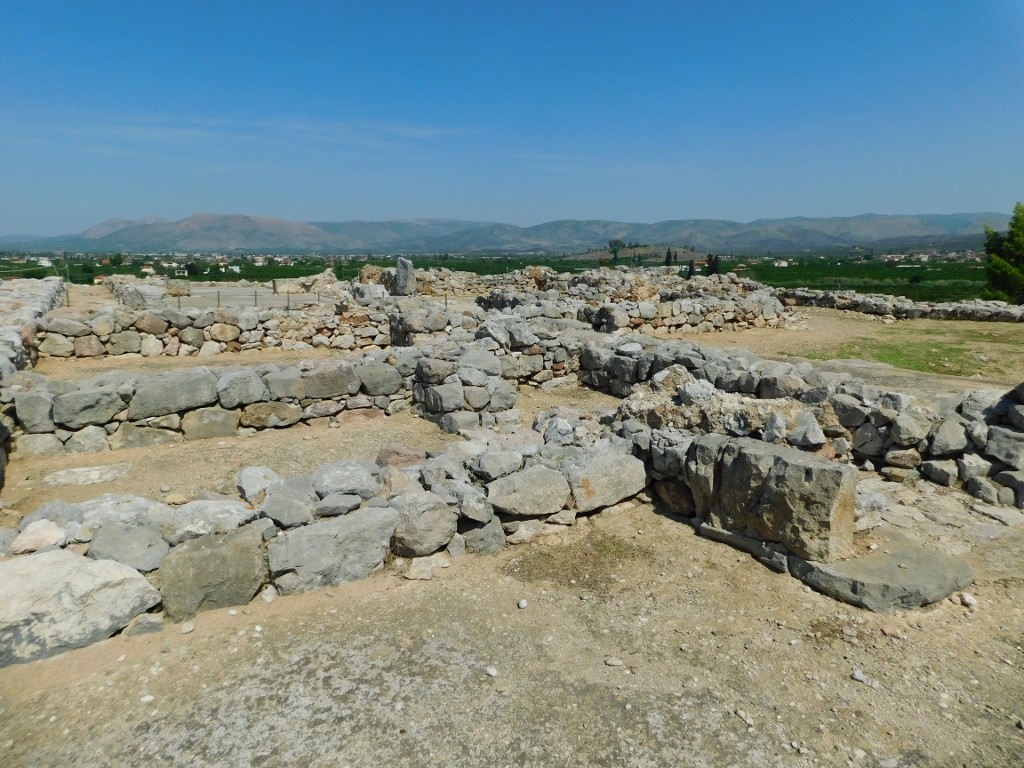 Mycenaean Acropolis of Tiryns, a detail
Mycenaean Acropolis of Tiryns, a detail
 Mycenaean Acropolis of Tiryns and the surroundings
Mycenaean Acropolis of Tiryns and the surroundings
From here, the lower part of the former tower was much clearer and there was also the restored niche.
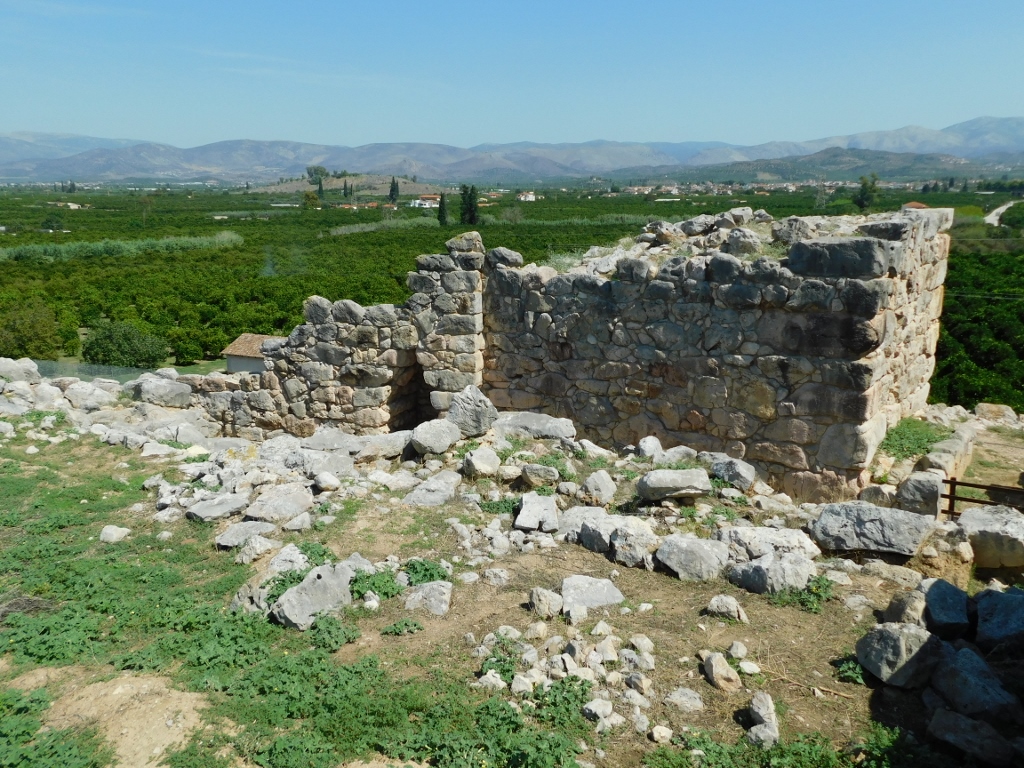 Mycenaean Acropolis of Tiryns, a detail
Mycenaean Acropolis of Tiryns, a detail
Then I moved to the western side of the Palace, as I planned to leave the entire fortress from there. However, I first noticed a beautiful bird of prey perched on a modern metal fence a bit further away, observing the surroundings. It was a common buzzard (Buteo buteo).
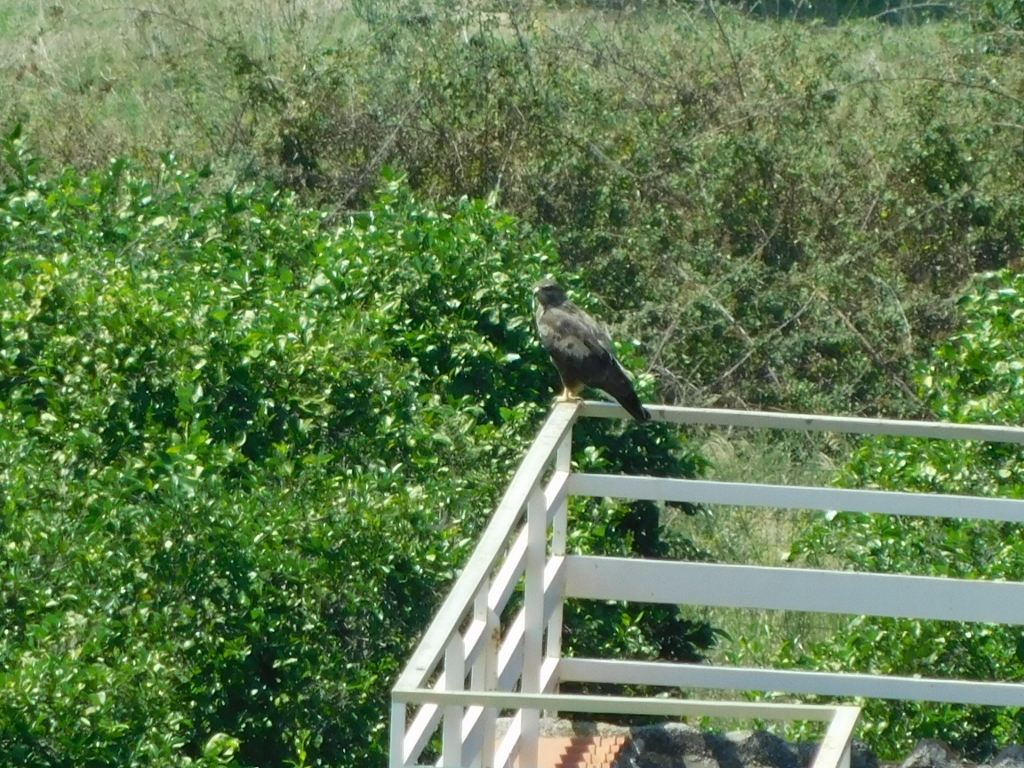 Common buzzard
Common buzzard
And then, I looked down from above at the stairs I planned to descend in order to leave the fortress. There are 80 steps that curve down towards one of the postern gates. The idea here was to put potential attackers at a severe disadvantage while allowing the defenders to maintain control over them.
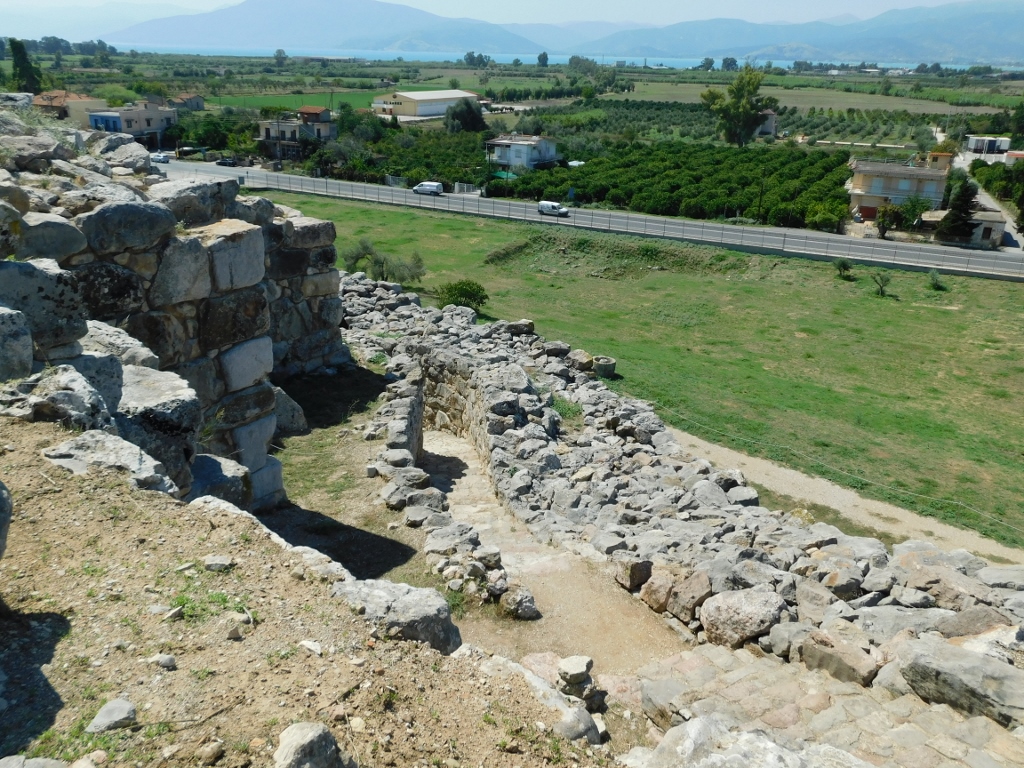 Mycenaean Acropolis of Tiryns, a detail
Mycenaean Acropolis of Tiryns, a detail
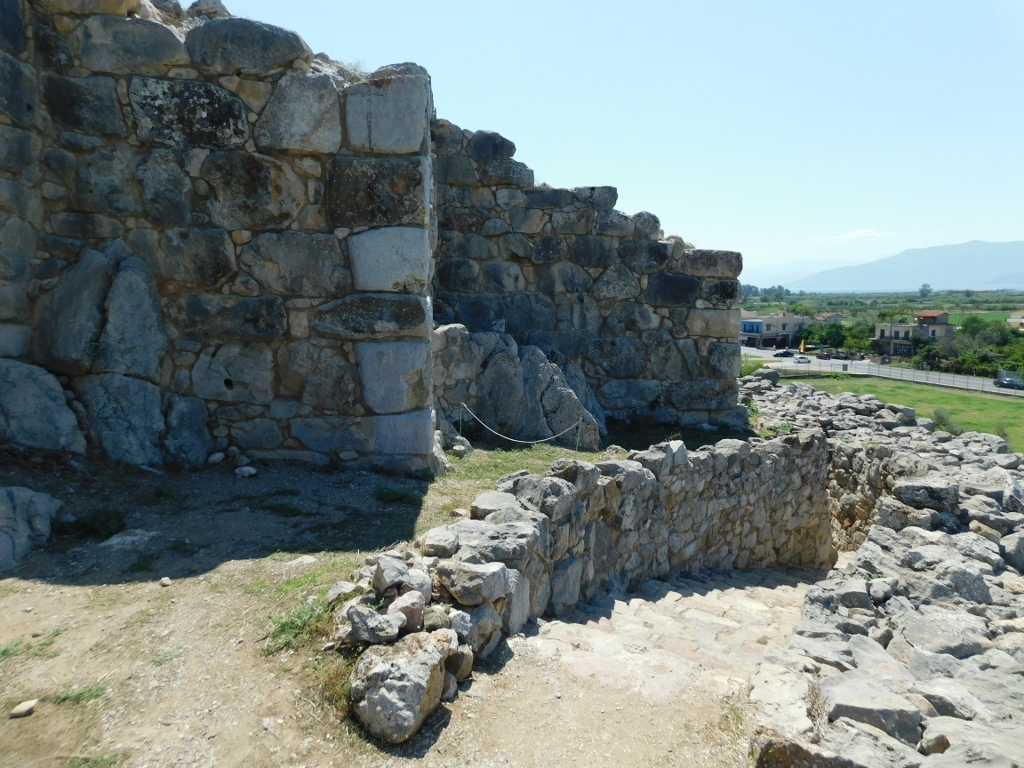 Mycenaean Acropolis of Tiryns, a detail
Mycenaean Acropolis of Tiryns, a detail
Before I started descending the stairs, I had to take another photo, which was particularly inspiring and easy to do thanks to the abundance of stone blocks where I could set up my camera.
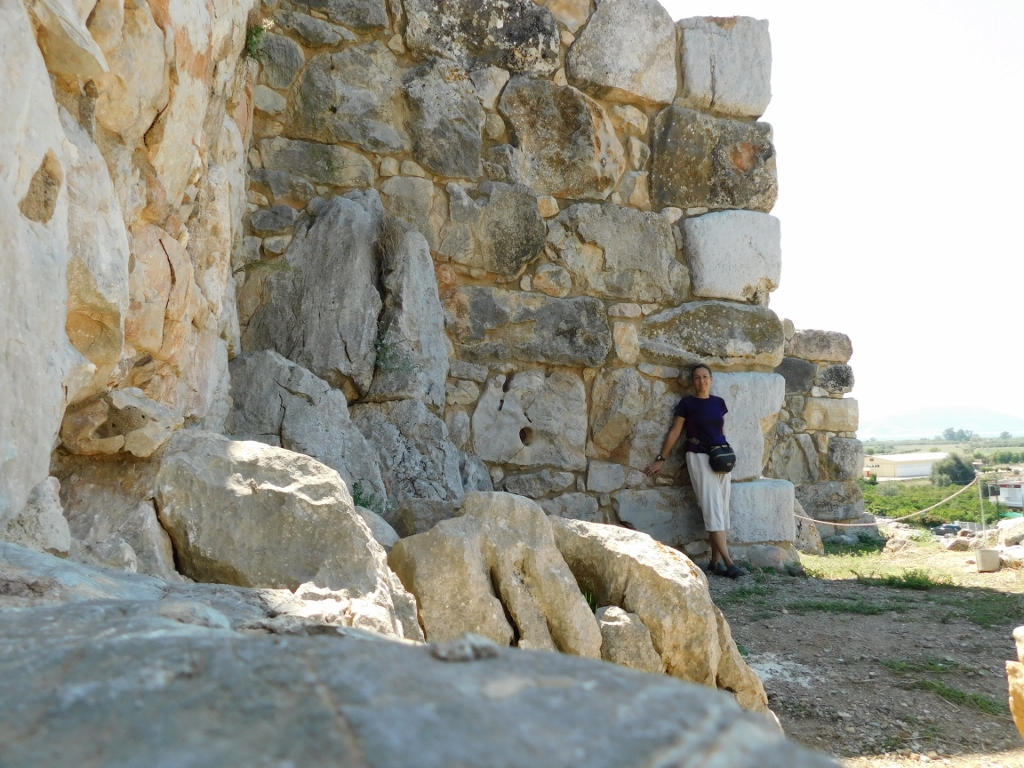 Posing within the ramparts of Tiryns
Posing within the ramparts of Tiryns
Eventually, I descended the stairs and looked back up towards the top.
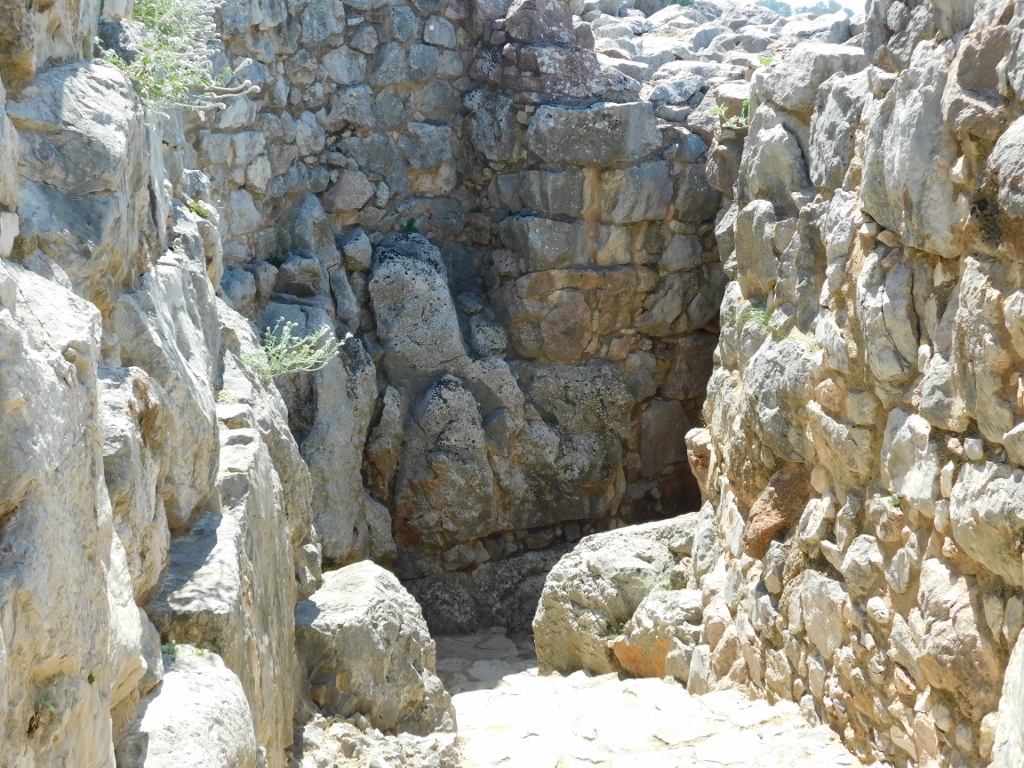 Mycenaean Acropolis of Tiryns, a detail
Mycenaean Acropolis of Tiryns, a detail
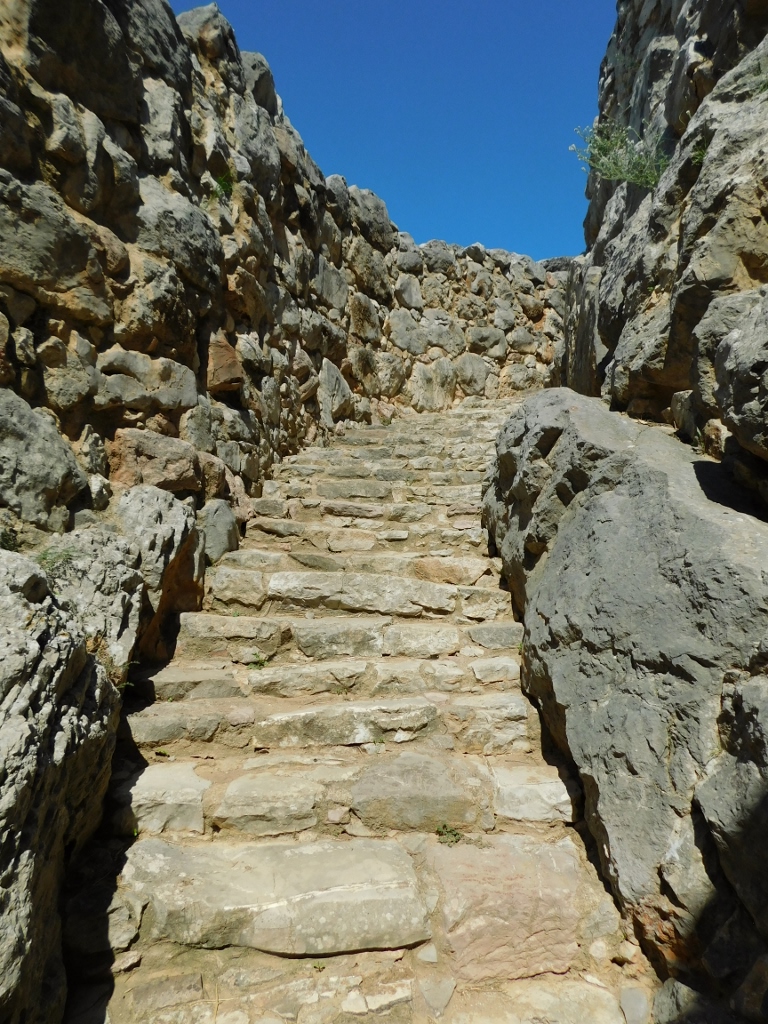 Mycenaean Acropolis of Tiryns, a detail
Mycenaean Acropolis of Tiryns, a detail
The entrance, or in my case, the exit from the fortress was equally impressive, as it led through a relatively long and narrow passage. Clearly, in the days when Tiryns was at its peak, it wasn’t easy to wage war or launch an attack here.
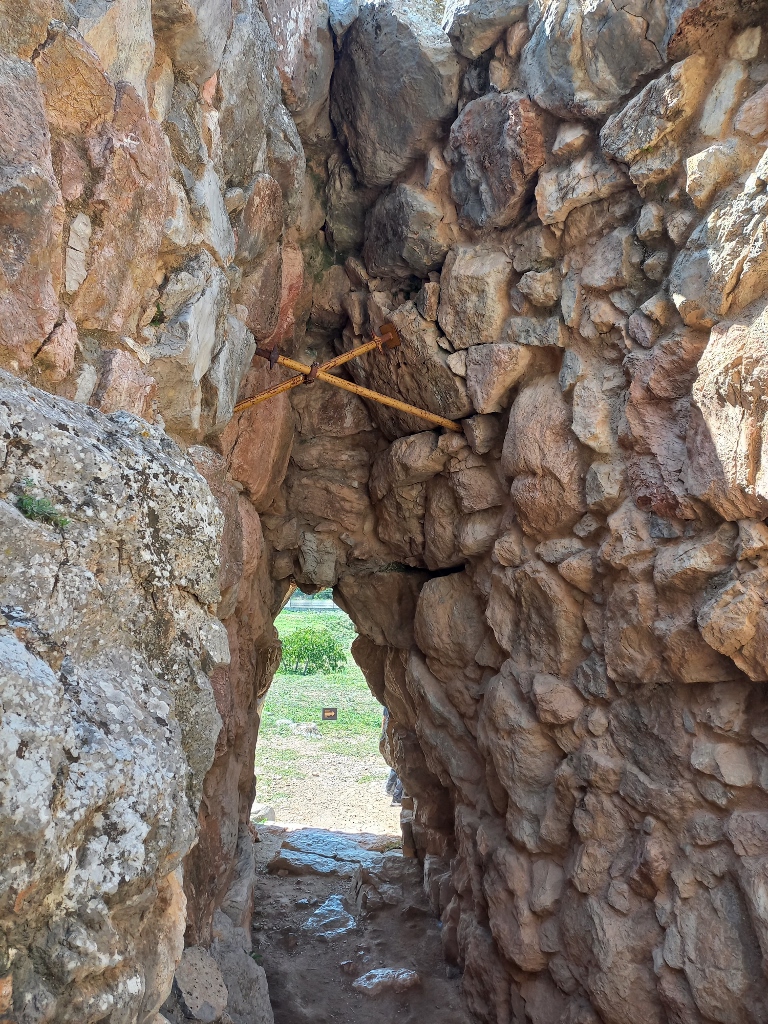 Mycenaean Acropolis of Tiryns, a detail
Mycenaean Acropolis of Tiryns, a detail
Only after exiting can you really see what that passage looks like.
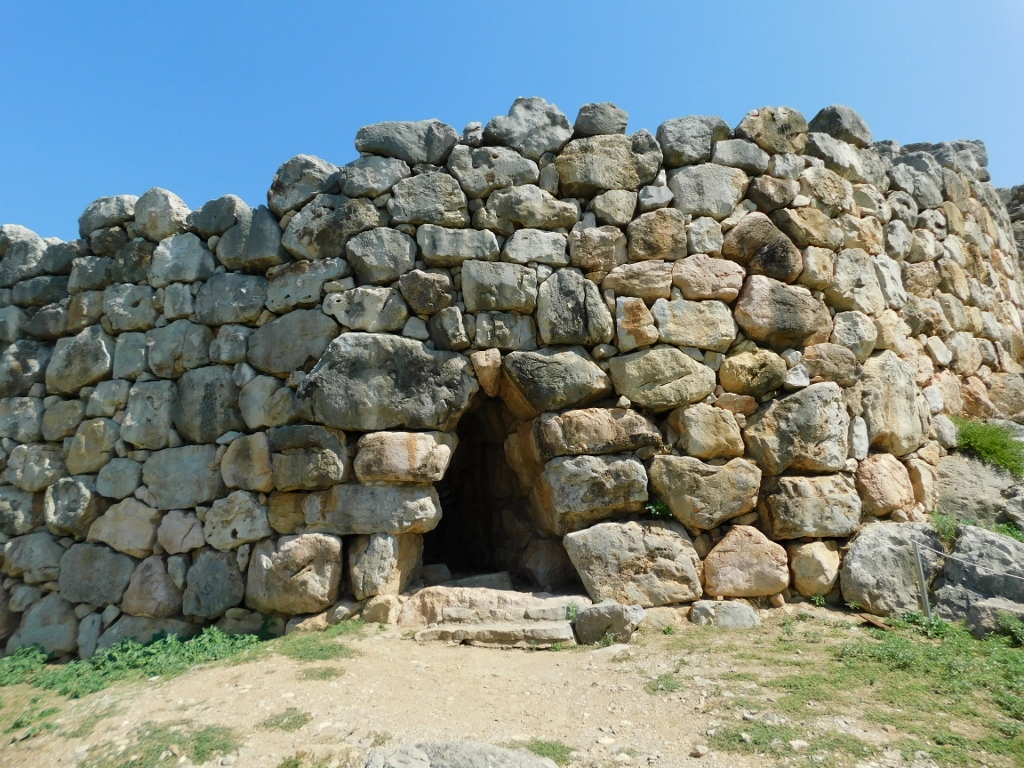 Mycenaean Acropolis of Tiryns, a detail
Mycenaean Acropolis of Tiryns, a detail
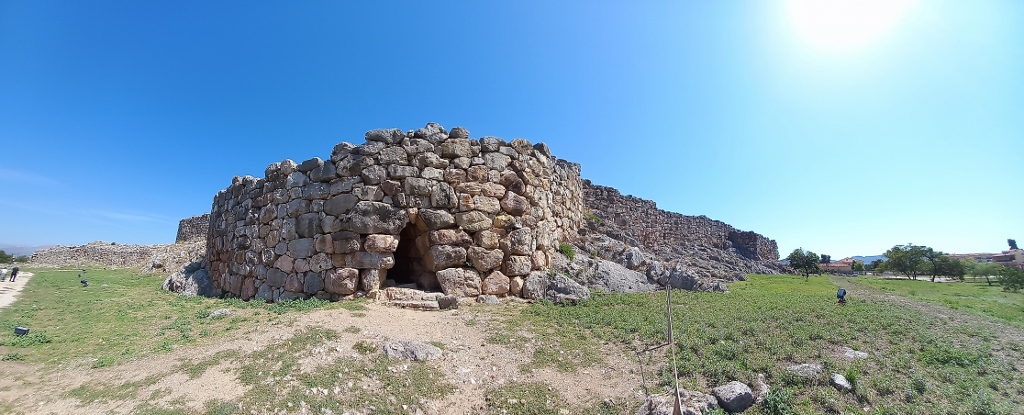 Mycenaean Acropolis of Tiryns, a detail
Mycenaean Acropolis of Tiryns, a detail
Now, I walked along the path that runs along the western walls of the fortress back to the parking area and my car.
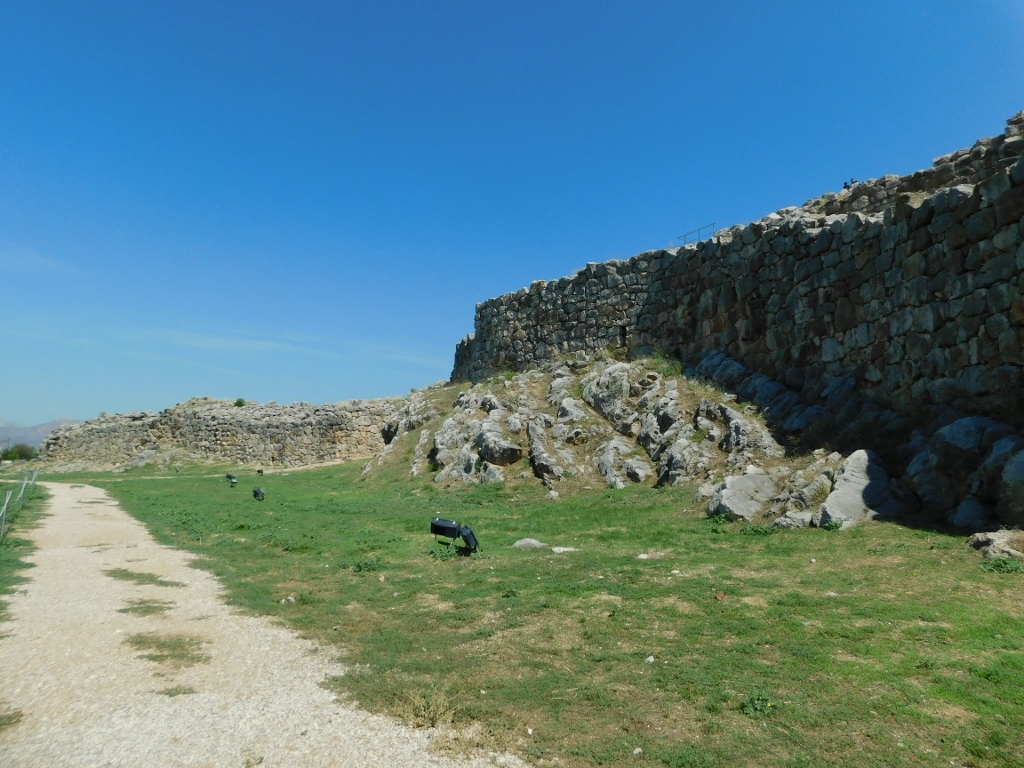 Mycenaean Acropolis of Tiryns, a detail
Mycenaean Acropolis of Tiryns, a detail
After the visit to Tiryns, I headed to Nafplio, where I had a room reserved in a hotel in the city centre.
I had been to Nafplio a few years earlier, but only briefly, just to spend the night. I remember being enchanted by its old town when I arrived. Back then, I got up very early the next morning just to stroll through its picturesque streets before continuing my journey. This time, however, I decided to make up for that and even planned a whole “free day.”
However, due to that brief weakness I experienced earlier in the day, after settling into my room, I first went for lunch at a fish restaurant recommended by a kind woman at the hotel reception. The restaurant wasn’t far away, which was important to me, and it offered everything I needed – tzatziki, grilled fresh fish and local beer.
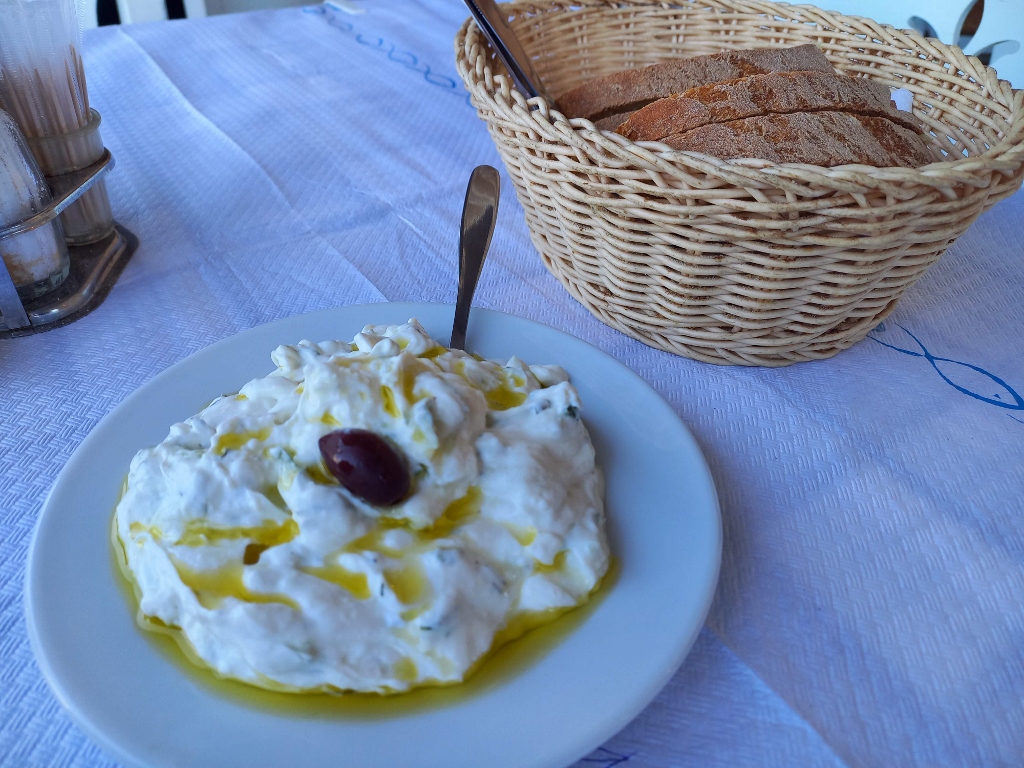 Lunch in Nafplio
Lunch in Nafplio
 Lunch in Nafplio
Lunch in Nafplio
 Lunch in Nafplio
Lunch in Nafplio
After the lovely lunch, I returned to my room and took a little nap to start my “proper” rest and recovery.